eu-LISA Anniversary Conference
10 Years as
The Digital Heart
of Schengen
index
opening remarks
European Commission Vice-President
Commissioner for Home Affairs, European Commission
Member of the European Parliament, Chair of the Committee on Civil Liberties, Justice and Home Affairs
1st Deputy Prime Minister and Minister of the Interior, Czech Republic
Executive Director, eu-LISA
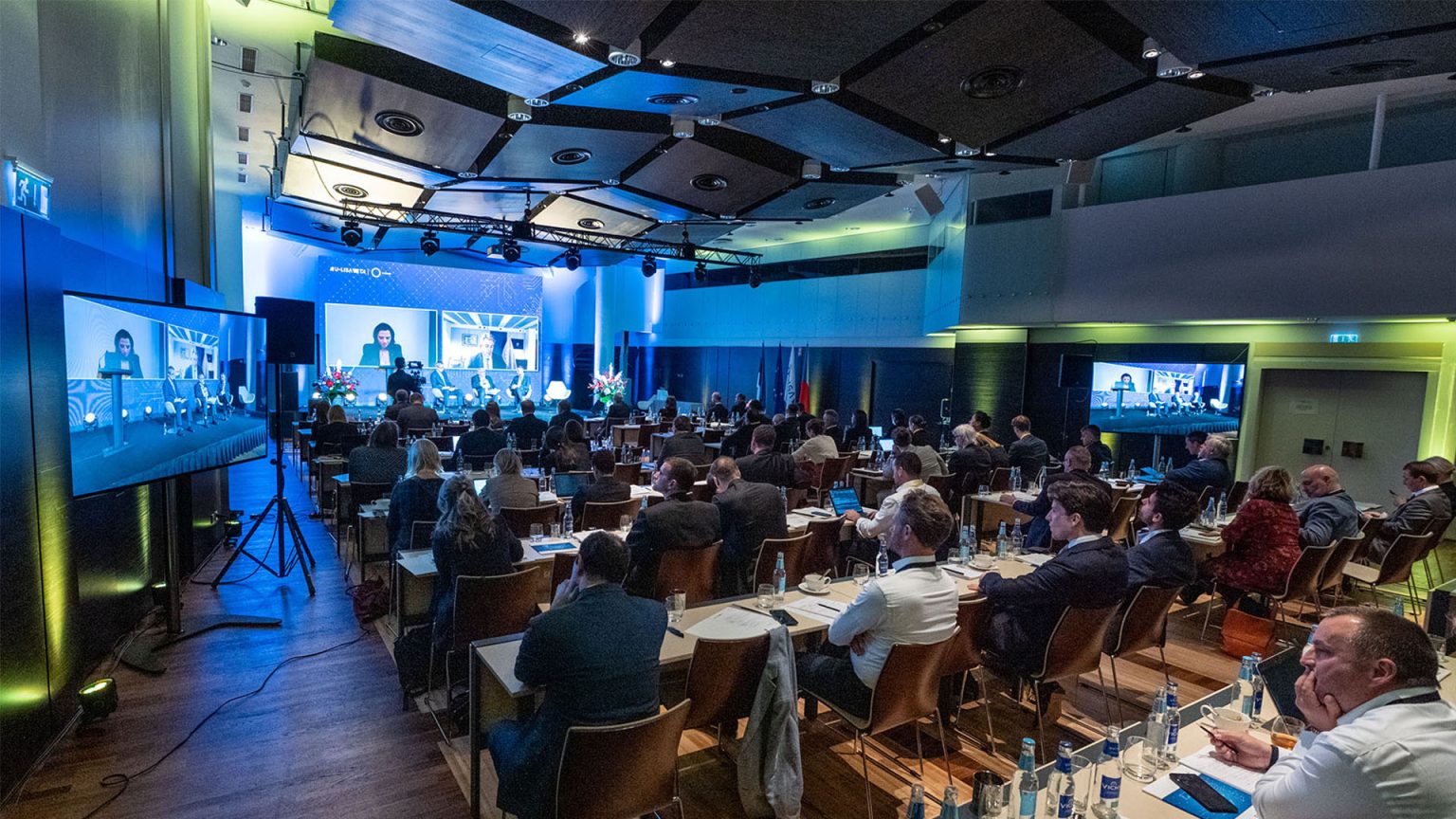
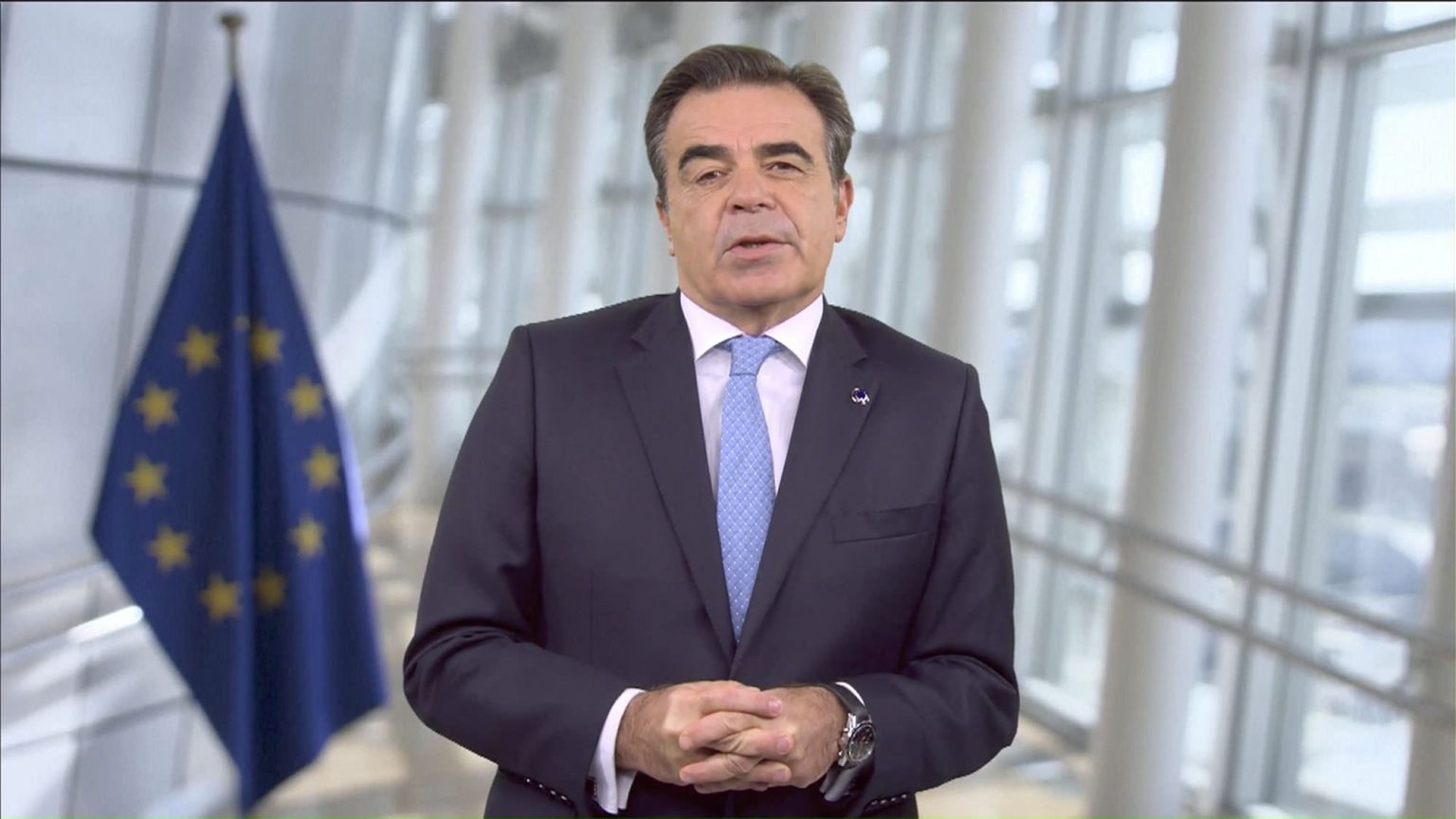
Margaritis Shinas
In his opening remarks, Vice-President Schinas commended the work that eu-LISA had done over the past 10 years, underlining that Schengen, like the euro and Erasmus, was something that makes us truly feel European. eu-LISA had become an essential instrument for the smooth functioning of the Schengen area: it efficiently operates the Schengen Information System, the Visa Information System and Eurodac. Moreover, the agency was entrusted with the development, implementation and operation of a set of new systems – the Entry/Exit System (EES), the European Travel Information and Authorisation System (ETIAS), and the interoperability of EU large-scale IT systems. Mr Schinas thanked Mr Krum Garkov, Executive Director of eu-LISA, for his contribution over the years and wished the agency well on delivering another milestone, this time in the field of interoperability of EU information systems.
Commissioner Ylva Johansson emphasised the transformation of eu-LISA from a start-up agency at the edge of Europe to the digital heart of the Schengen area in a mere 10 years. The important work of eu-LISA and its Executive Director Mr Garkov became all the more visible with Russia’s terrible war in Ukraine. Schengen border guards were under a lot of pressure to manage the flow of women and children fleeing the war, but we prevailed, because our systems work and we keep improving them to build the most advanced border management system in the world – one that allows us to have a more secure European Union that was welcoming for those who come with good intentions.
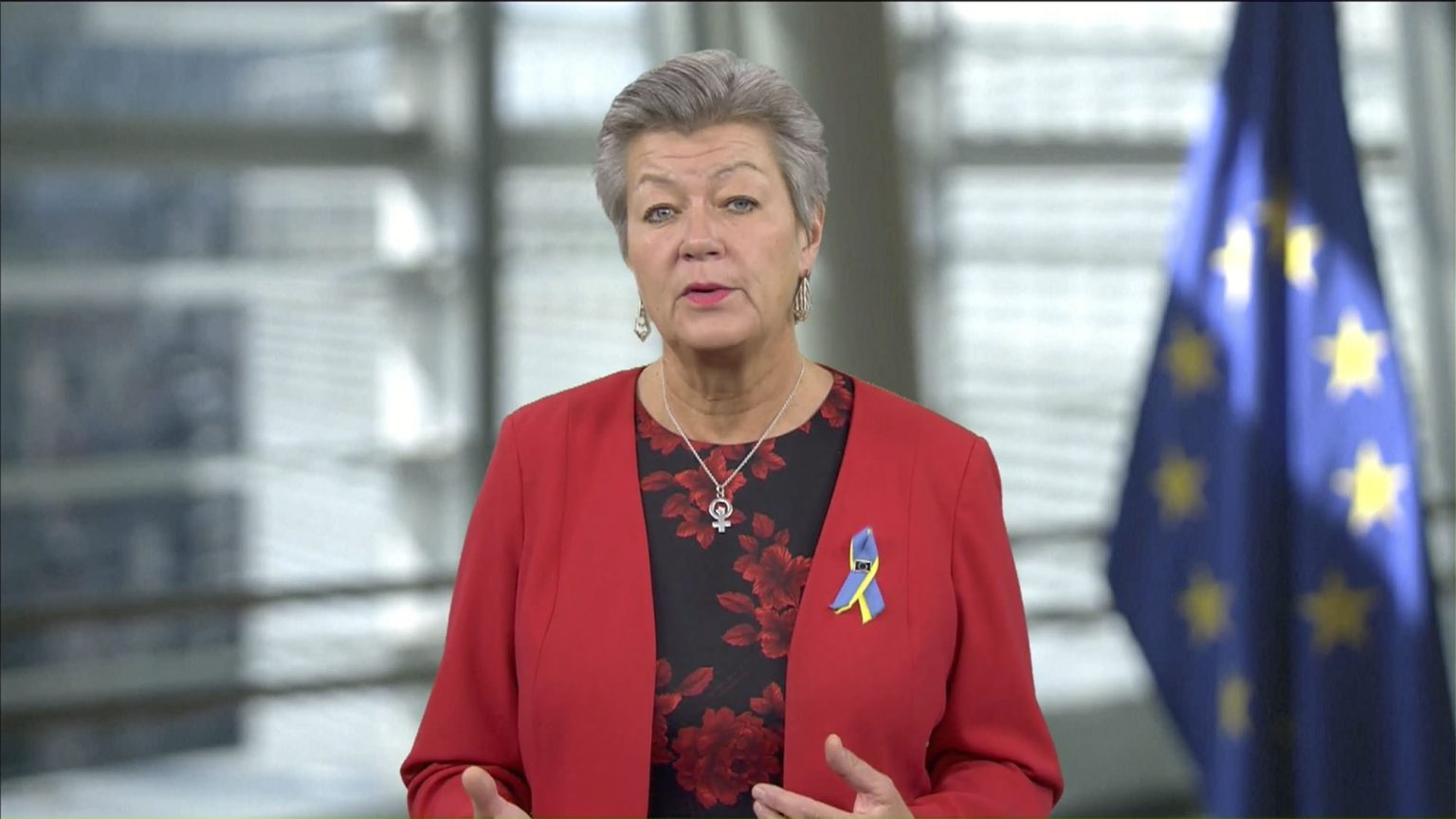
Ylva Johansson

Juan Fernando López Aguilar
Mr Juan Fernando López Aguilar started by expressing the importance of effective operational management of EU large-scale IT systems. eu-LISA had become a cornerstone of the architecture of the agencies, which deal with crucial issues regarding liberties, justice and home affairs. Mr López Aguilar recalled the beginning of creating information systems dealing with asylum, border management and migration policies in 2011, saying that even though some of these issues could be divisive, trusting eu-LISA with the operational management of systems had been beyond dispute. It was this trust that new solutions such as the interoperability architecture, digitalisation of justice, e-CODEX and future artificial intelligence solutions could be built on. Mr López Aguilar thanked Mr Garkov for his outstanding contribution to the field and underlined the commitment of the European Parliament to highest standards with regard to protecting fundamental rights and particularly privacy and data protection.
Mr Vít Rakušan began by explaining that for the Czech Republic, a former member of the Eastern bloc, Schengen had always been a symbol of the desire for freedom of movement. eu-LISA, under the leadership of Mr Garkov, had successfully utilised technological innovations to strengthen Schengen, and must continue on this track of continuous progress.
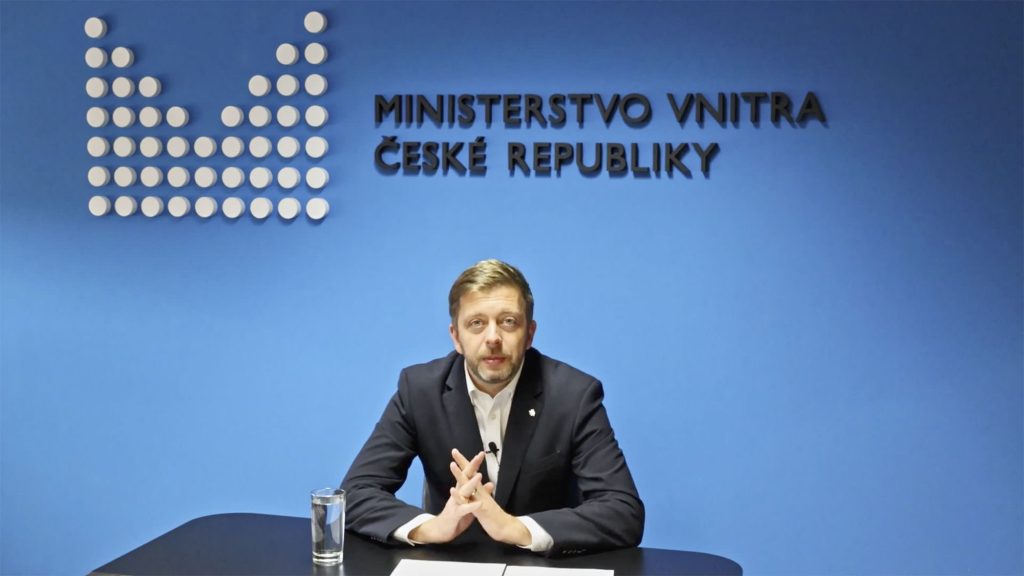
Vít Rakušan
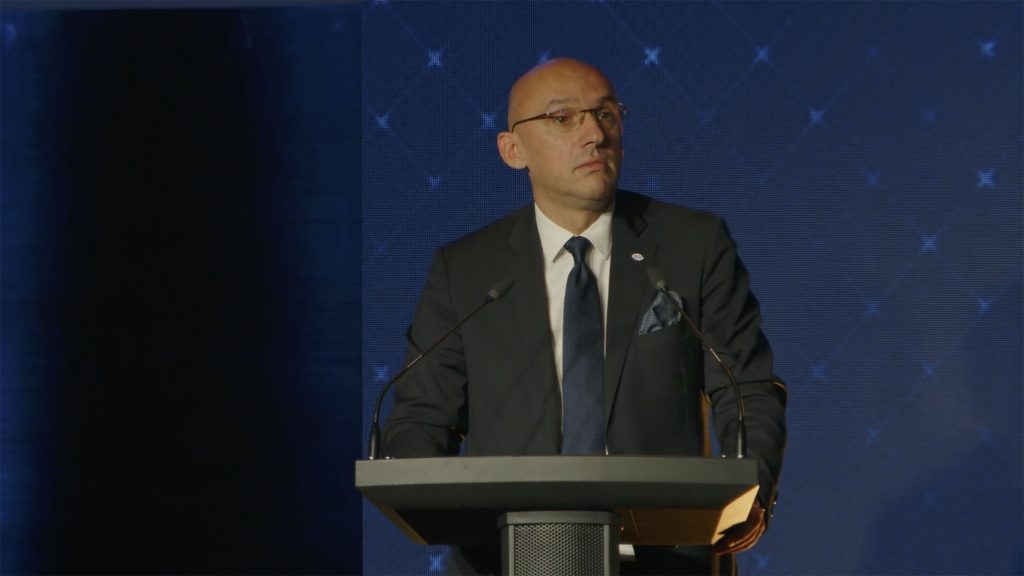
Krum Garkov
Mr Krum Garkov welcomed all the guests to the conference marking 10 years of existence of the agency that had grown to become the digital heart of Schengen. Mr Garkov noted that his term as the Executive Director would end in a few weeks, and expressed his thanks to the entire staff of eu-LISA, the EU institutions: the Commission, the Parliament and the Council, as well as the Member States for their support and collaboration. Mr Garkov talked with great appreciation about the opportunity to affect positively the life of more than 400 million Europeans living in the Schengen area, and make it possible for them to exercise one of their fundamental rights – the freedom of movement. Mr Garkov stated that the role of eu-LISA in embracing change and challenges to accelerate digital transformation in various fields and build a new security ecosystem in the EU would remain vital in the years to come.
PANEL I
eu-LISA: journey from a technical Agency to the Digital Heart of Schengen
Panel discussion:
Senior High Counsellor, Ministry of Interior of Hungary; Chair of the Management Board of eu-LISA
Undersecretary for Resources, Planning and Technology, Estonian Ministry of Internal Affairs
Member of the European Parliament, Renew Europe
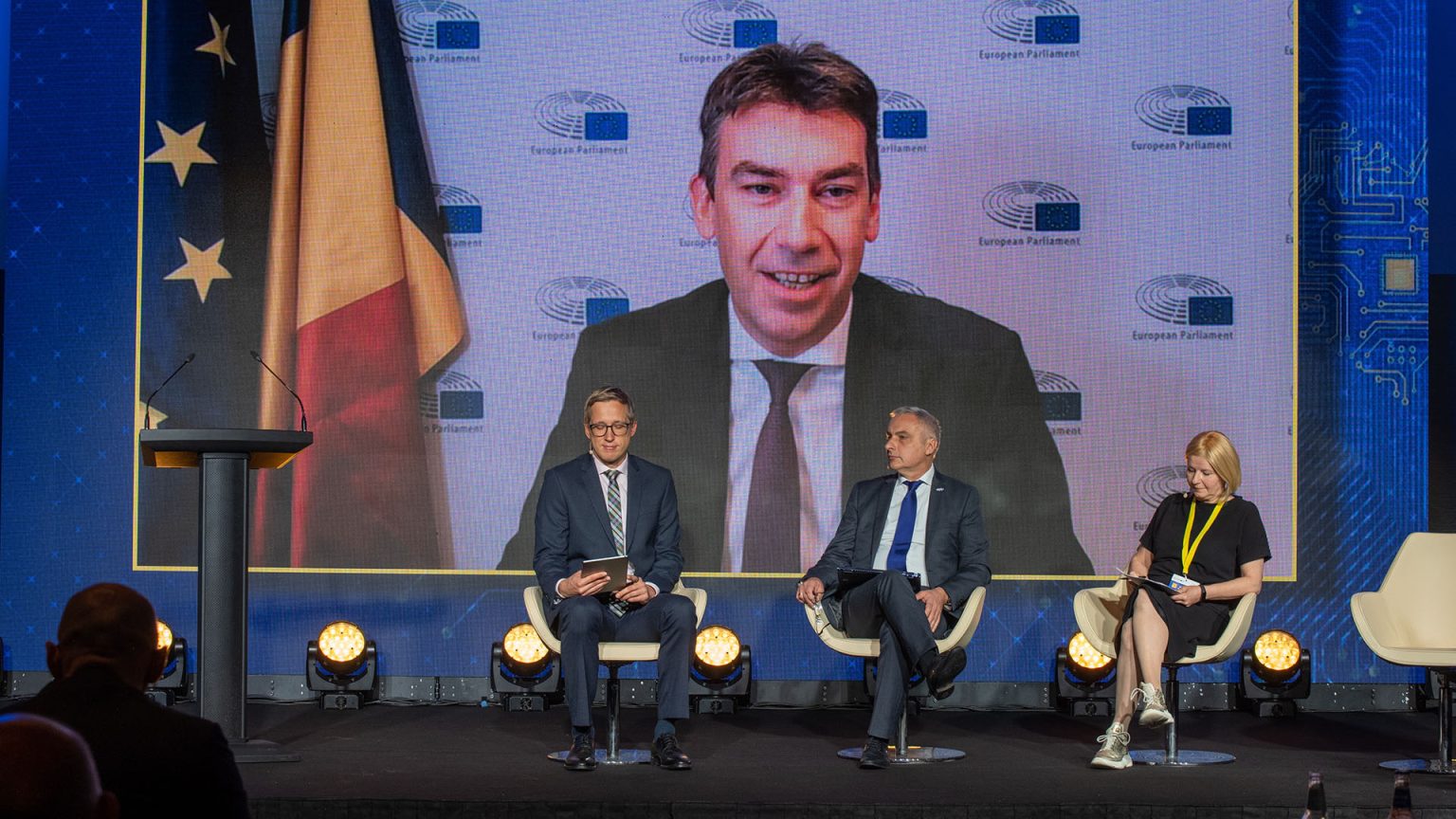
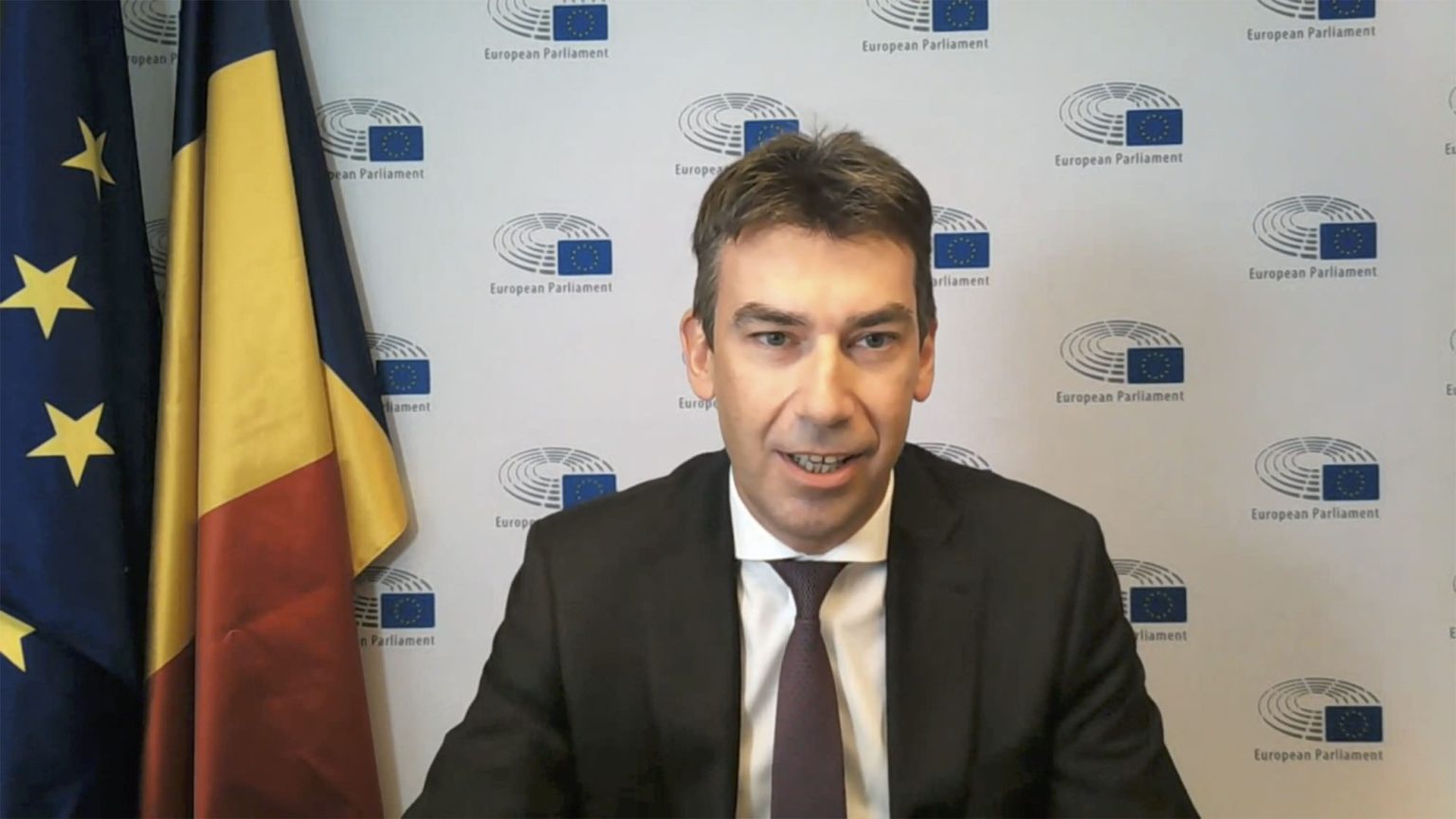
Dragoş Tudorache
Mr Dragoş Tudorache began by recalling his memories from the time eu-LISA was created and he acted as the first Executive Director of eu-LISA on behalf of the European Commission. Mr Tudorache pointed out that many people who started working at euLISA 10 years ago were still working at the agency today. The beginning was not easy, and there were many who seriously doubted that the first two large-scale projects – the Schengen Information System (SIS) and the Visa Information System (VIS) – could be effectively implemented. According to Mr Tudorache, it was the strong team that continues to be the core of the agency that accomplished the task. Another problem that came up very early in eu-LISA’s development was that, as the financial crisis had just ended, the whole idea of establishing a new agency was not well received. However, the operational need for an entity that would manage these systems was there, and the mandate was given to start preparing the establishment of this agency. Several other organisational, legal and logistical issues needed to be ironed out, and despite the odds, the agency was opened and assumed responsibility for running critical systems for the whole of the European Union. Mr Tudorache expressed his strong belief that it was only thanks to those who believed in the mission and put their heart and soul into making it happen that eu-LISA was created and had become the centre of excellence that it was today. Mr Tudorache commended the work of Mr Garkov and expressed his deep-seated conviction that the agency would continue to carry out its mission in an outstanding way.
Ms Piret Lilleväli offered a perspective from Estonia on the initial role of eu-LISA and the vision for its future. Ms Lilleväli recalled Estonia and herself personally being big supporters of the creation of this agency from the very beginning. Estonia had a vision that digitalisation was vital in supporting law enforcement and the internal security of the EU, and that the development and management of IT systems should be in the hands of professionals. This thinking did not go hand in hand with the scepticism that many Member States had about creating a new agency. Ms Lilleväli explained that Estonia had established its IT agency for internal security a few years earlier, and there was a strong understanding of how beneficial an EU agency could be and how much it could speed up the processes. Ms Lilleväli said there were not many countries supporting Estonia in demanding more digital tools for European internal security, besides SIS, VIS and Eurodac. However, Estonia had a clear vision for needing more digital EU tools, such as the EES and ETIAS, and this was where we were now. Ms Lilleväli underlined Mr Garkov’s role in carrying forward the vision and getting the agency to its current state of having a wider mandate than ever.
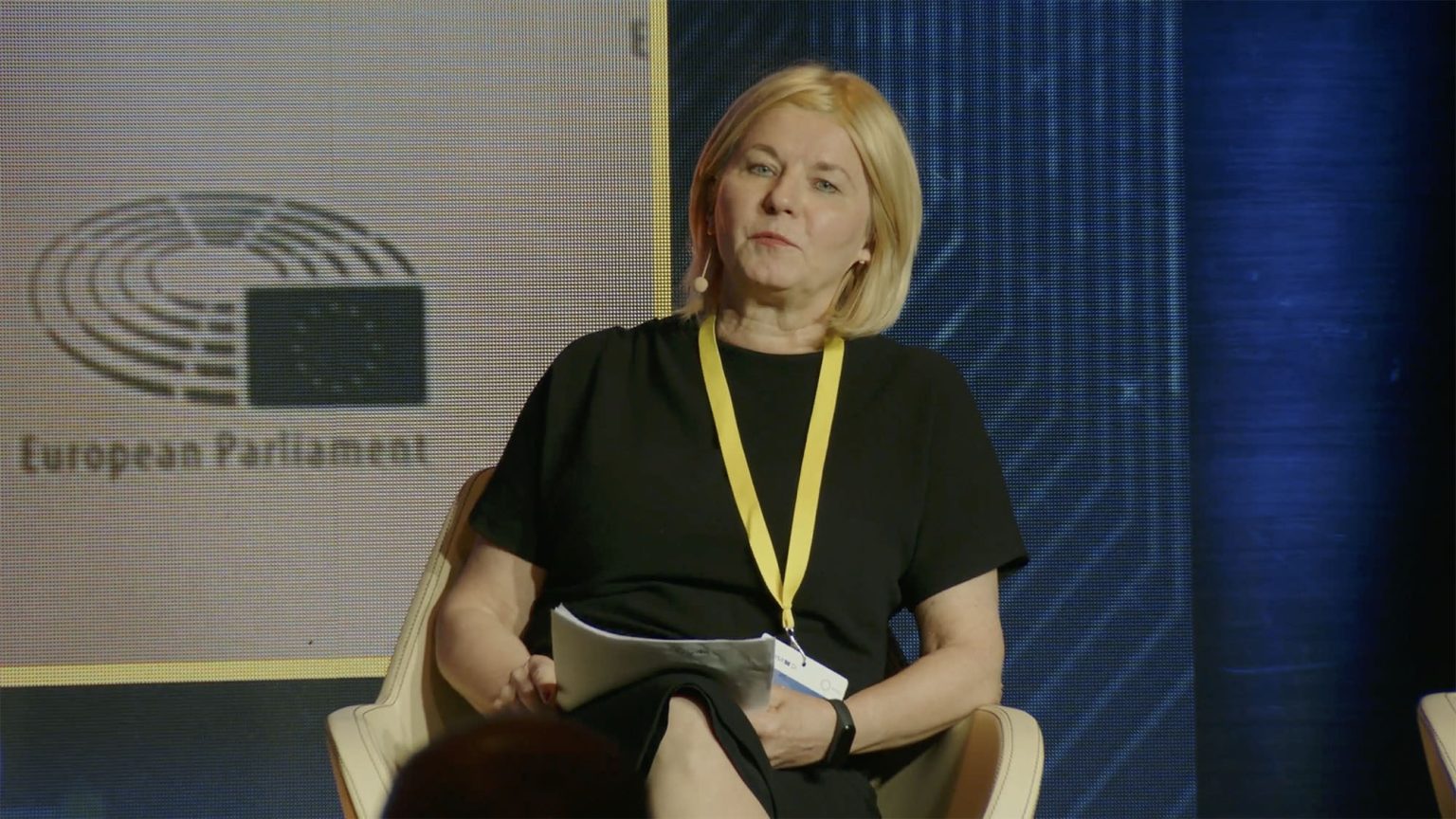
Piret Lilleväli
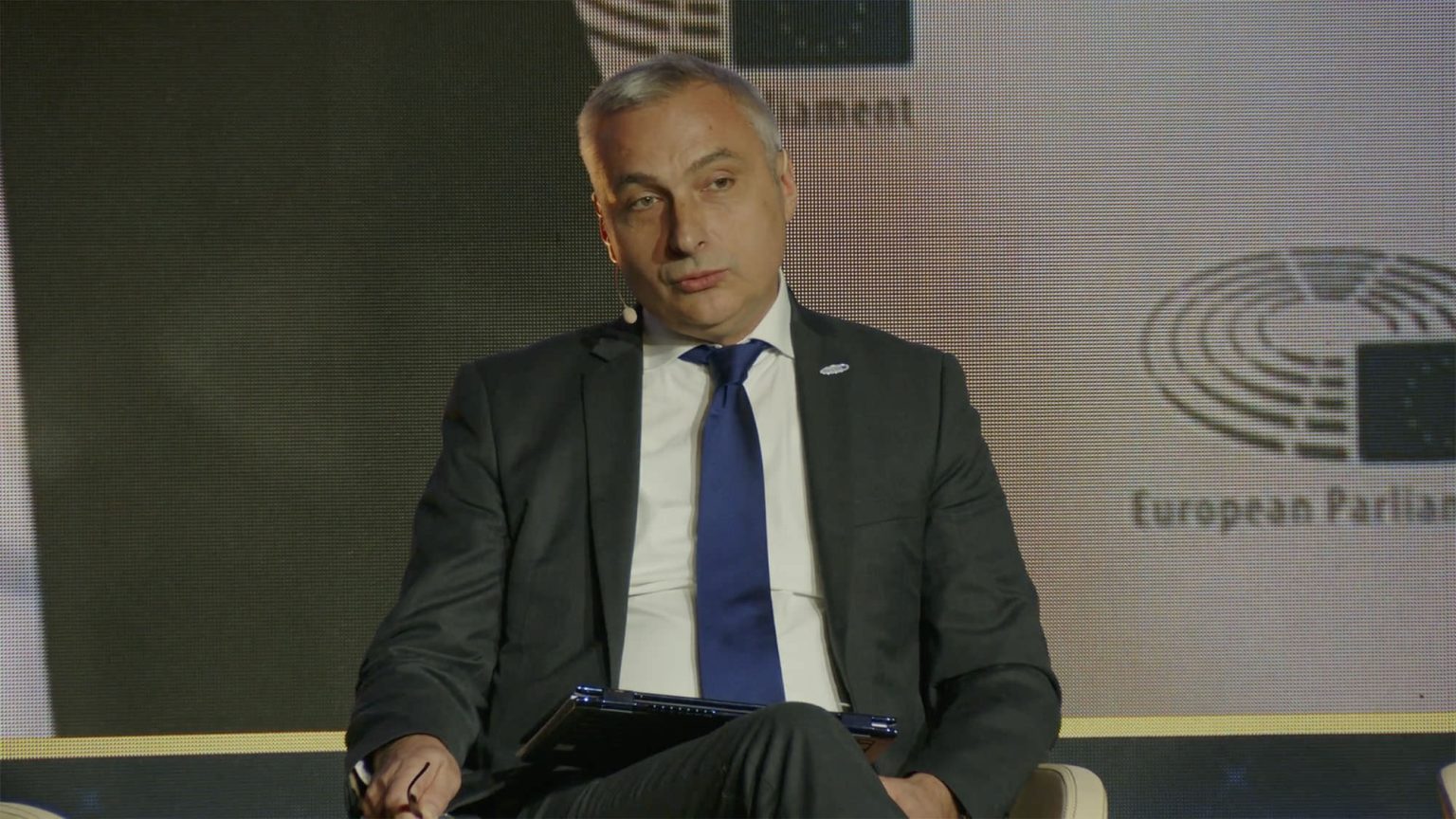
Zsolt Szolnoki
Mr Zsolt Szolnoki contributed to the panel with his perspective as the Chair of the Management Board of eu-LISA. Mr Szolnoki recalled that it was back in 2006 when he first came into contact with the operational management of the Schengen Information System and Visa Information System. From the operational perspective, the agency was set up in 2011, and the official journey started in 2012. Mr Szolnoki recalled that for the first 5 years, from the Management Board’s point of view, eu-LISA had a quite solid governance structure and worked like a normal EU agency, namely it had a Management Board and Advisory Groups, with around 40 meeting days a year. As from 2018, eu-LISA had a fairly robust governance structure, with still only one Management Board, but three Programme Management Boards, five Advisory Groups, and two other groups. In terms of numbers, Mr Szolnoki explained that in the second 5 years, there were at least 80 days when any kind of eu-LISArelated meetings took place. In 2023, there would be 99 days, as the justice portfolio with the e-CODEX Programme Management Board and the Joint Investigation Teams’ governing bodies would step in. Mr Szolnoki outlined one more outstanding number – the eu-LISA Management Board Secretariat had peaked at 2 000 emails on one day, which displays a very active interaction between the agency, the Member States, other partner agencies and the European Commission. Mr Szolnoki concluded his statement by emphasising the importance of transparent and efficient national coordination in order to ensure effective work by the agency. Mr Szolnoki said the people involved in the Advisory Groups and other bodies form a community and that was of great value for the agency.
In responding to a question about the triggers that led to the discussion of the Eurodac and further interoperability during the European migration crisis, Mr Tudorache explained that different crises often help in mobilising people to find new solutions, even if they have previously been regarded as too ambitious. The ideas about developing the new systems, such as the Entry/Exit System were starting to come forward already during the development of the Schengen Information System, the Visa Information System and the biometric matching system inside the systems. Discussions about what real interoperability and integration of systems would look like and how it could be achieved had already started before the migration crisis. All these concepts were put forward in the middle of the crisis. This work and common achievements laid the ground for developments that the agency was working on now.
Ms Lilleväli received a question about the main contributions of eu-LISA to the development of EU border and migration management and its future. For her, in a situation where the systems were running and new ones were under development, the most important thing was that there was very good cooperation between the agency and the Member States. In Ms Lilleväli’s view, going forward, eu-LISA should not be limited to purely internal security IT systems only – digitalisation of further policy areas in the EU, more flexibility and crossing silos was needed. The first success stories had already emerged in the field of justice, but there would be more, including in the area of customs and maybe the area of defence. Besides that, Europol and Frontex – the agencies in the home affairs area – should rather use the IT competence of eu-LISA than create additional own capacities. She emphasised that the Estonian point of view for the future was that eu-LISA ought to develop the centre of excellence of the new technologies, and there was a sense of urgency in this.
For Mr Zsolt Szolnoki, the answer to the question on the future role and added value of eu-LISA as the digital heart of the EU was that no new tasks should be added until the end of this financial period, that is, until 2027. Mr Szolnoki explained that the agency was working at full steam on the implementation of the smart borders project, as well as on integrating the justice portfolio. It was impossible to do so many things in parallel, because we had to take care of the quality of the product, that we were delivering together. This was the approach of the Management Board as well, that it was important not to overload the agency with different tasks. Beyond 2028, however, there was potential for developing the PRÜM, API, PNR and visa digitalisation systems. Mr Szolnoki agreed with Ms Lilleväli’s central idea of the need for greater flexibility, and noted that in the future the agency should strive to work more efficiently within the current portfolio.
Responding to the same question, Mr Tudorache’s main proposal was that eu-LISA would most need to keep performing well in the field that it was working in. In his role as Member of the European Parliament, Mr Tudorache was closely involved in the digital transformation file and policy at large. He contended that, politically, it was not easy to set up the governance of the future implementation of the AI act in a similar way that eu-LISA was established, with the promise of centralised EUlevel governance. Mr Tudorache said that the success of eu-LISA as a consolidated centre of excellence was an argument proving the point that it was important to set up a governance that had such an EU body to coordinate the AI-related efforts at national level. As his second point, Mr Tudorache pointed out that, given the digital transformation that our societies and economy would go through, even living up to this transformation would require incorporating new tools and technologies. In terms of value added, potential applications would be useful for Member State authorities in the quest of ensuring our security and the proper management of our borders and migration flows. Mr Tudorache concluded with the idea that it was crucial for the agencies to become beacons of excellence in the digital area, which would attract talent and expertise, which would then be put to good use.

We had clear vision that European internal security needs more digital tools.
PANEL II
eu-LISA today: the Digital Agency for EU Home Affairs
Head of the Business Relations Management Sector, euLISA; Chair of the EES-ETIAS Advisory Group
Director for Schengen, Borders & Visa, Directorate-General for Migration and Home Affairs, European Commission
Deputy Executive Director, Europol
Head of Division, Forensic Science Police Service, Italian Ministry of Interior; Chair of the Eurodac Advisory Group
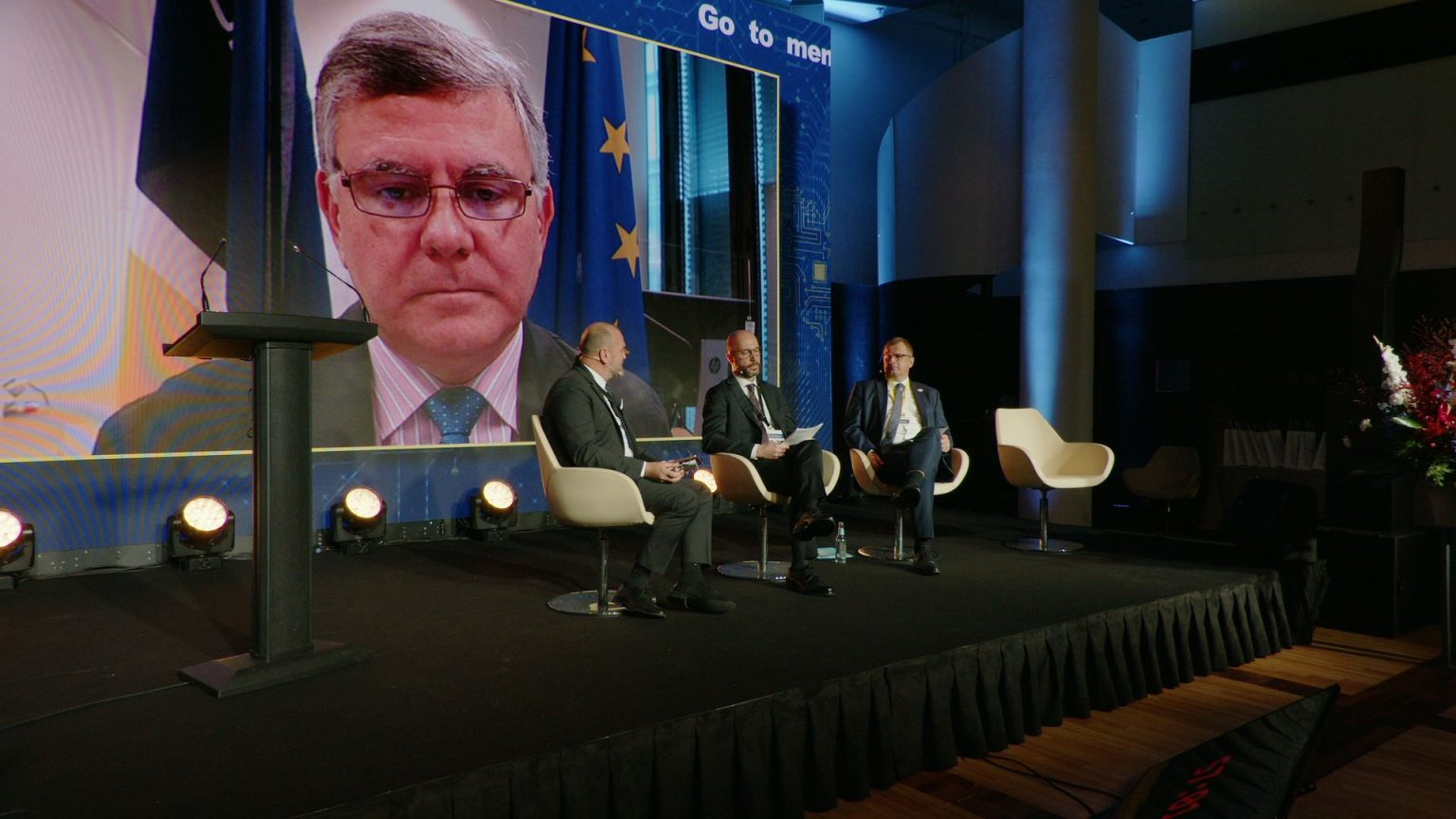
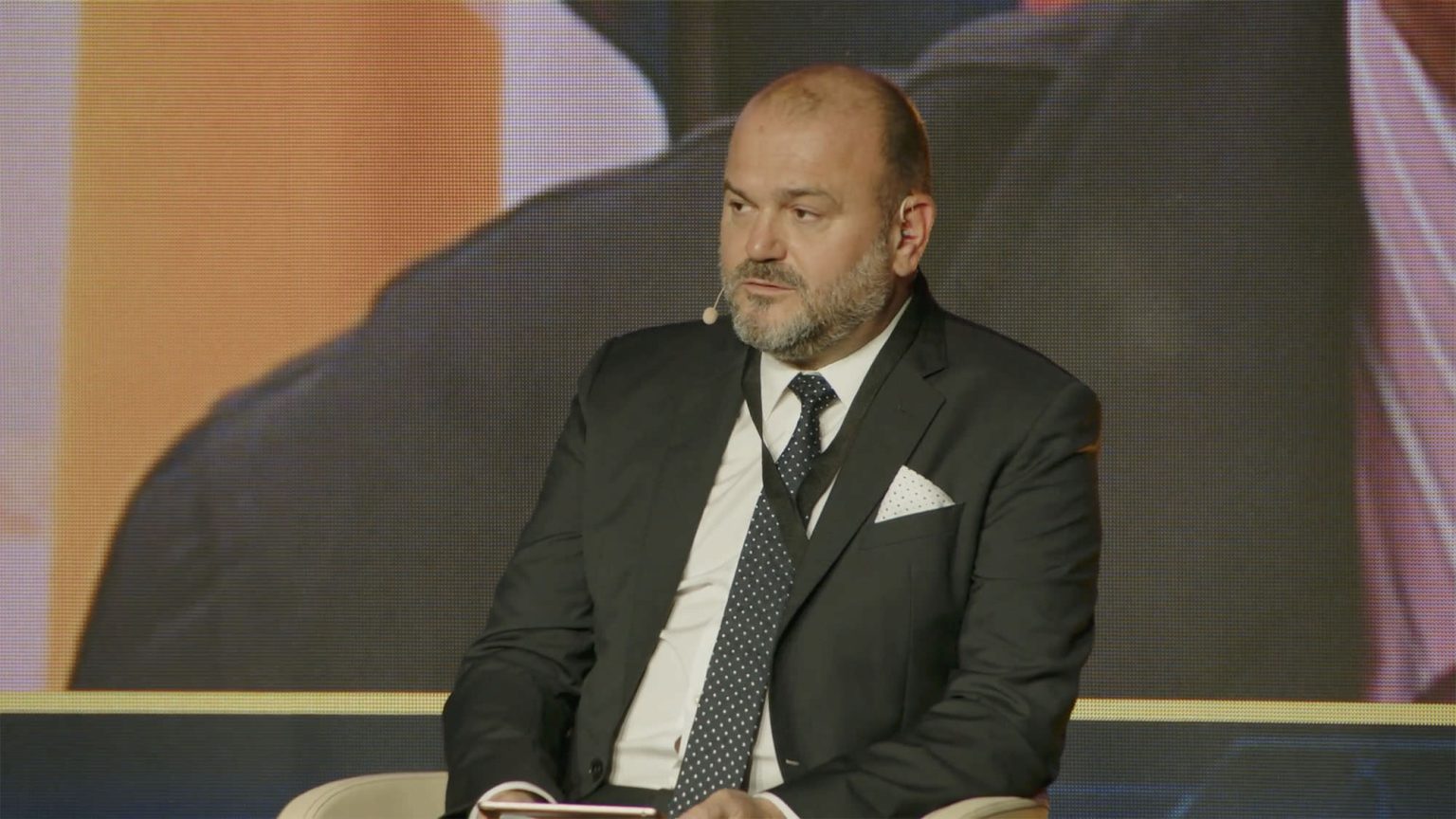
Theofanis Syrigos
The moderator, Mr Syrigos opened the panel by explaining that taking stock of the current standing of eu-LISA was the main goal of this panel. Specifically, he underlined the big architectural systems that would be in place: the Entry/Exit System, ETIAS, and ECRISTCN. Mr Syrigos explained that the evolution of SIS would become live by the end of this year, followed by the implementation of EES, together with the related VIS evolution as well as the ETIAS and ECRIS-TCN by the end of 2023. On top of that, all these systems would come together with the interoperability components, the very essence of transforming data into information.
Mr Matthias Oel received a question about how the implementation of the interoperable architecture would further strengthen the EU external borders and at the same time contribute to the growth of the Euro zone. Mr Oel first described the current international situation, saying that Russia’s war in Ukraine and other factors put the integrity and functioning of the Schengen area at risk. There was a strong connection between external and internal borders, and this had become visible also during previous crises. Mr Oel recalled that in 2015 we had a mass influx into the European Union, and it demonstrated that the systems built up by then were not strong enough to protect the Schengen area: the Dublin system broke down and the Eurodac database was no longer used. At the beginning of the COVID-19 crisis, there was a chaotic situation at the EU’s external borders, which had affected the functioning of the Schengen area on the inside as well. When we in the EU were confronted with registering refugees fleeing the war in Ukraine, we had to build up a platform in record time with the help of eu-LISA under very stressful circumstances.
Mr Oel said that in less than one and a half years the EU would dispose of one of the most modern border management systems in the world. In the future, we would know who had entered the European Union or the Schengen area, as well as when and where a person left the Schengen area. It would bring a huge increase in efficiency and effectiveness, but also in security. Talking about how the new IT architecture went together with economic growth, Mr Oel said that it was impossible to have economic prosperity without internal security. He also underlined facilitated travel, including business travel, and a well-functioning management of our external borders, which also supported the smooth functioning of the internal market.
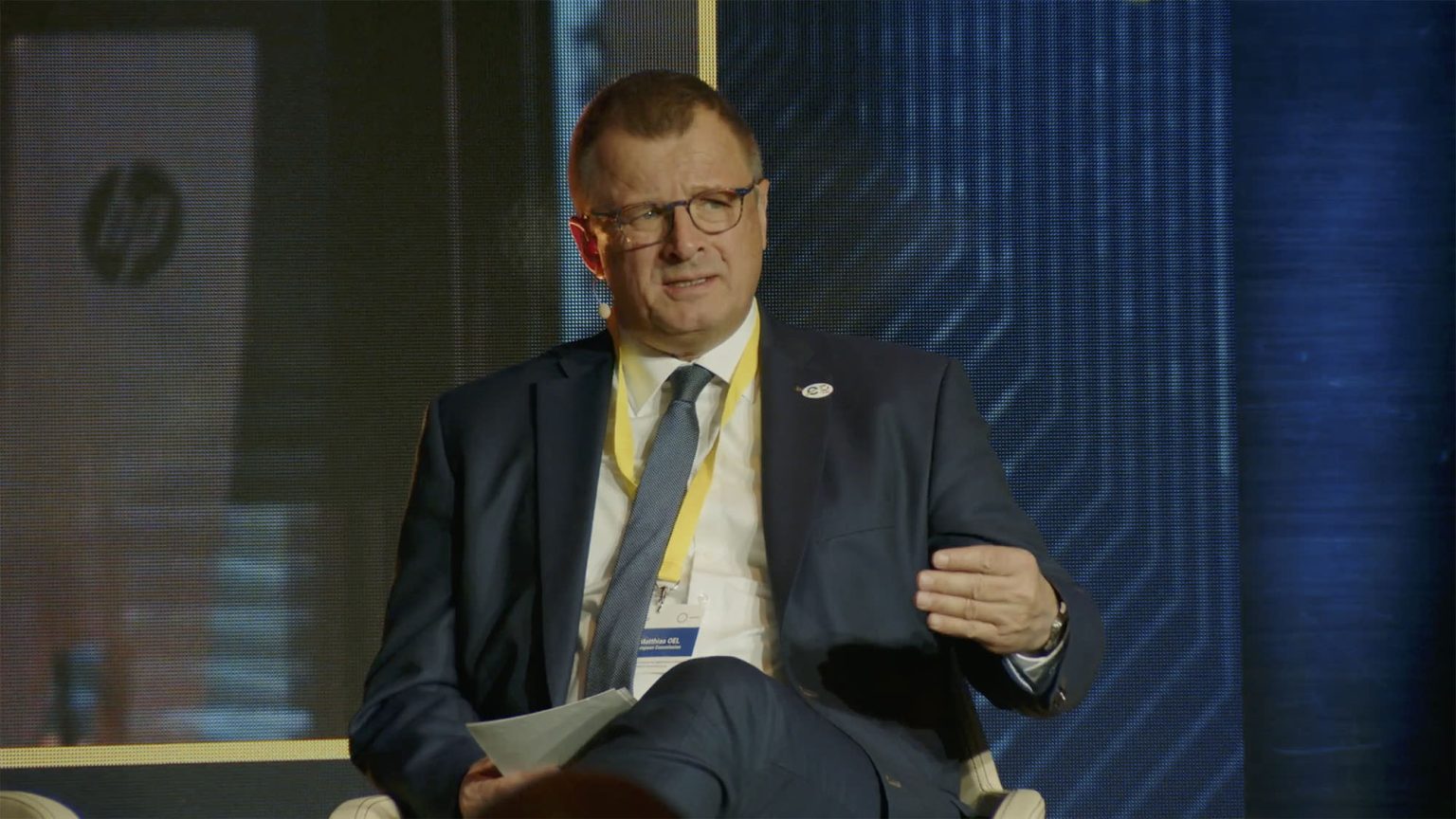
Matthias Oel
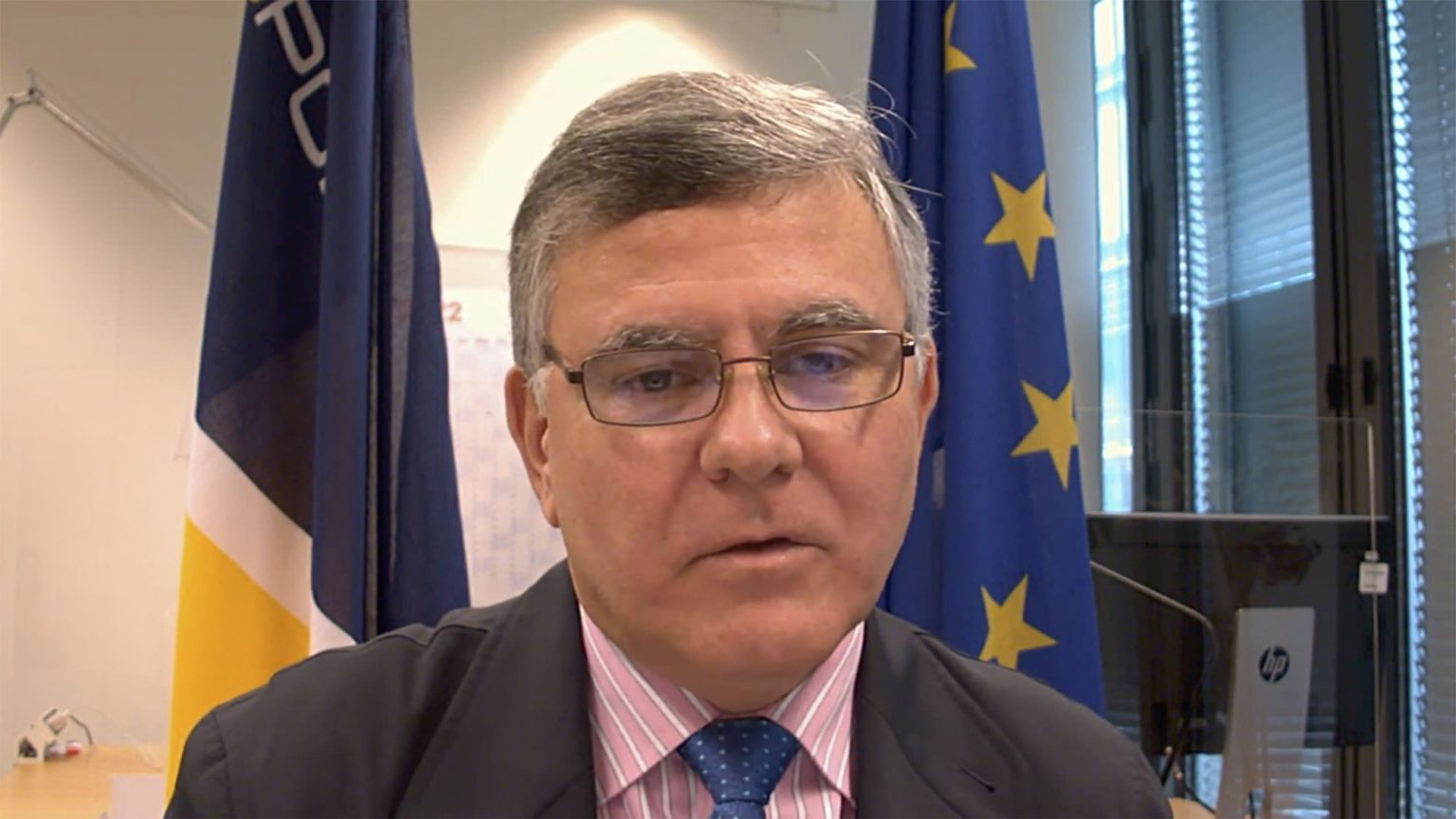
Luis de Eusebio Ramos
The moderator’s question for Mr Luis de Eusebio Ramos related to how cooperation was working between the different EU agencies (eu-LISA, Europol, Frontex, etc.) and how it was helping to create security in the Schengen area. Mr de Eusebio Ramos started by thanking euLISA and Mr Garkov for the excellent cooperation in the past years, and for building a close relationship with Europol. Mr de Eusebio Ramos stated that, in general, the structure of direct working groups and advisory groups set up by the Commission was working well. It was becoming ever more diverse as various fields were uniting – working in isolation would not solve the problems of the citizens for the future. Mr de Eusebio Ramos outlined three main challenges to cooperation, starting with the legal limitations in different legal frameworks, which existed despite the efforts by the legislator and the Commission to have a smooth mapping between the different legal frameworks. According to Mr de Eusebio Ramos, the second main challenge was related to the need for the agencies to gather for many different stakeholders. The third challenge from Europol’s point of view, was regarding standardisation – it was a strategic priority. In this area, Europol strongly supported the Universal Message Format, which it was trying to establish in all of its IT systems.
Mr Lorenzo Rinaldi responded to a question about the utility of the new interoperability architecture in dealing with new potential crisis, and believed that it would be extremely helpful. Mr Rinaldi recalled the multitude of problems that police and border officers had to deal with during the 2015 immigration crisis. There were issues with data quality, officers had to do multiple searches in multiple systems and had to enter the same data for several times, and it was still not clear whether they had received the correct information. According to Mr Rinaldi, with the interoperability architecture, many of these issues would be addressed and solved, legally and technically. It would help efficiently and quickly to provide very important statistics, such as on the nationalities of the migrants, to the national, political and EU stakeholders and agencies. Mr Rinaldi explained that the competent authority would quickly collect and aggregate data from different systems, and this would foster the evaluation of the status of the migrant and help assess their level of dangerousness. Potentially, the duration of the process could switch from days or weeks to hours or minutes. Mr Rinaldi concluded with the idea that the system could be improved further by the capable use of biometrics, including facial image detection, as this would help move towards identity management.
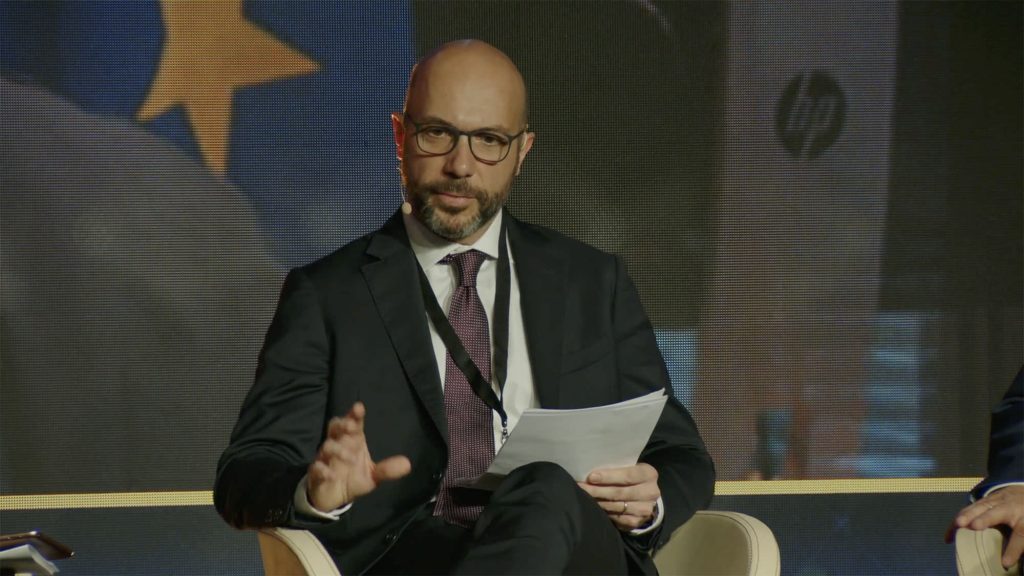
Lorenzo Rinaldi
The moderator explored further the issue of establishing identity management – as opposed to just border management – and Mr de Eusebio Ramos explained that this was a big challenge for an agency such as Europol. From the law enforcement side, encryption, the difficulty of tracing payments for visas, and anonymity made it particularly difficult to process large sets of information. The interoperability architecture would affect very positively law enforcement as well, as it would establish links between these huge amounts of data. Mr de Eusebio Ramos said that identify fraud was a very serious threat, which was often related to terrorism and organised crime. New solutions, including potentially moving towards a common identity repository of biometric data of third country nationals, would be helpful in precise identification of persons and avoiding crimes. Mr de Eusebio Ramos noted that these activities must certainly take into account the Data Protection Regulation; debates regarding the best solution had to continue, and eu-LISA played an important role in this.
Mr Lorenzo Rinaldi received a question about the new Eurodac and how it would support the asylum procedures. He responded that Eurodac joining the interoperability cluster of system, would constitute almost a quantum leap forward. The system would provide the possibility of counting applicants, rather than applications – there would be an effective mechanism to link all the data related to the same person in a single file. Eurodac would eventually have the biographic data of the asylumseekers – this would help eu-LISA to provide accurate statistics about the real numbers, nationalities and countries of origin. This would give us better insight into the phenomena, and all the data related to the same data subject would help protect minors and streamline the work of national asylum authorities, as they would receive a lot of new and valuable business information.
Mr Matthias Oel explained how the implementation of the new information architecture would help protect European values, in particular from the fundamental rights perspective. He started by referring to an instrument the EU had at its disposal to protect those values: a solid impact assessment, which formed the basis for the Commission to adopt a legislative proposal. Impact assessment was a very comprehensive document, and it also included an assessment of the impact of the proposal on EU values, including in domain of Justice and Home Affairs, with data protection and privacy on the one hand and the right to free movement on the other. Mr Oel emphasised that all measures we took to protect our borders could intrude the right to privacy only as much as was necessary, and the right to data protection for those travelling or entering into the Schengen area would also be upheld. Mr Oel said that the new architecture had undergone this assessment and passed the regulatory scrutiny board, which gave us the confidence that our IT systems were and would be fully in line with our values.
The panel ended with questions from the public, and the first was what had the EU done to ensure the quality of biometric data and what more could be done. The panellists assured that there were tools within the systems that were constantly checking the quality, but the regulation itself clearly outlined what we had to do in order to constantly improve. There were clear references on biometric accuracy and constant monitoring of this accuracy together with the Member States. eu-LISA and the Member States put a lot of effort into defining quality criteria and deciding how it should be implemented. Investing in quality check software, which eu-LISA did a lot, was an added value, but the Commission also had to monitor the quality. The final question from the audience was about the rights of the irregular immigrants, especially asylumseekers, over the information they provide at the border. The panellists explained that there were, indeed, very clear rules on this, including on how long data could be saved. It was important for us to be in line with our values and, that said, it was essential that the migrants would continue to have the right to access their data and correct it if it was wrong.
What can be considered the interoperability architecture’s main added value?

There cannot be economic prosperity without internal security.
PANEL III
eu-LISA today: supporting the digital drive in EU Justice
Head of Planning and Standards Unit, eu-LISA
Head of Resources Department, Eurojust
Head of Unit, e-Justice, IT and Document Management, Directorate-General for Justice and Consumers, European Commission
Expert for Legal Information Technology and Coordinator of the entity managing the e-CODEX system; Ministry of Justice of the state of North Rhine-Westphalia, Germany
Chair of the Working Party on e-Justice, Czech Presidency
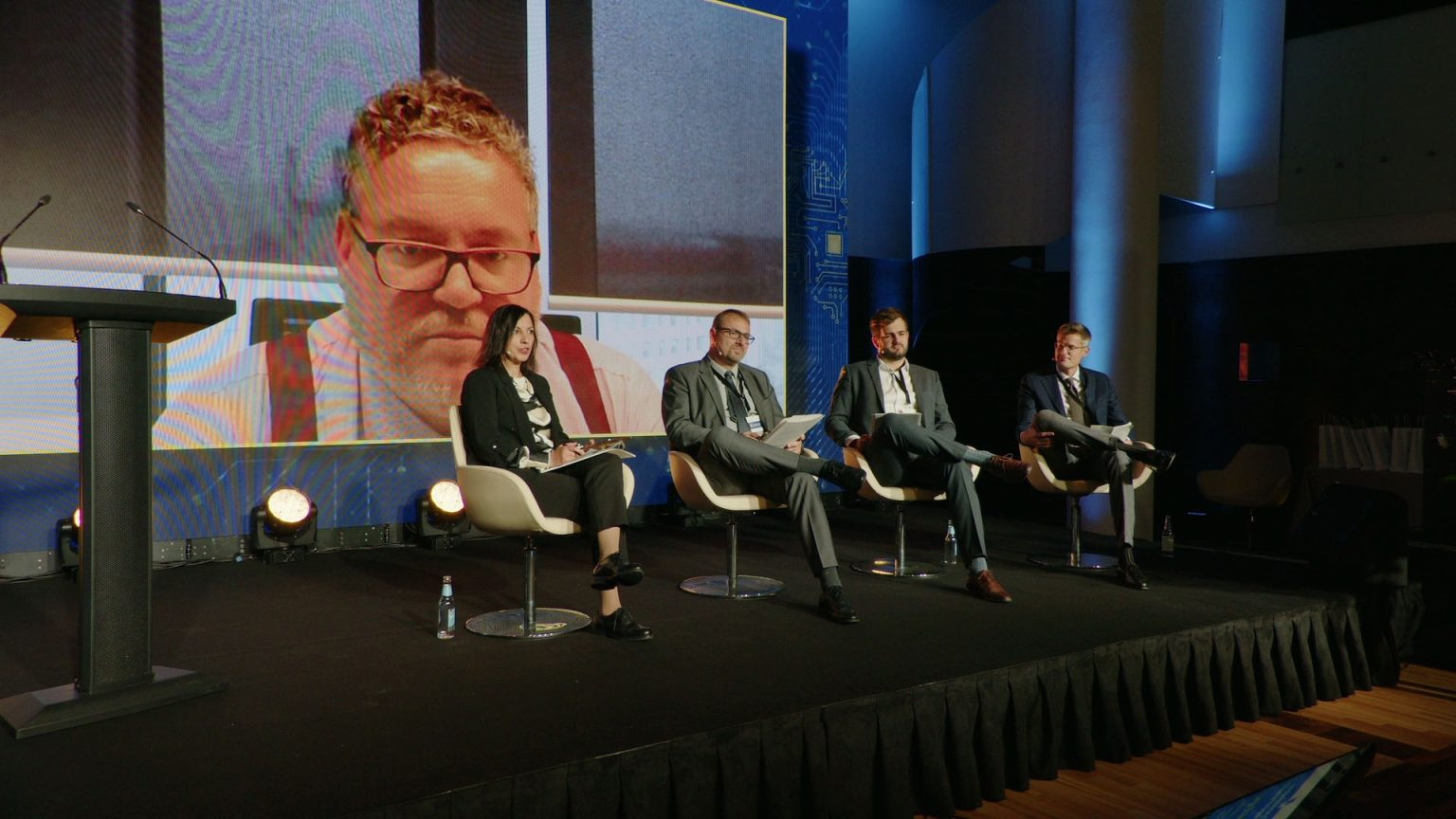
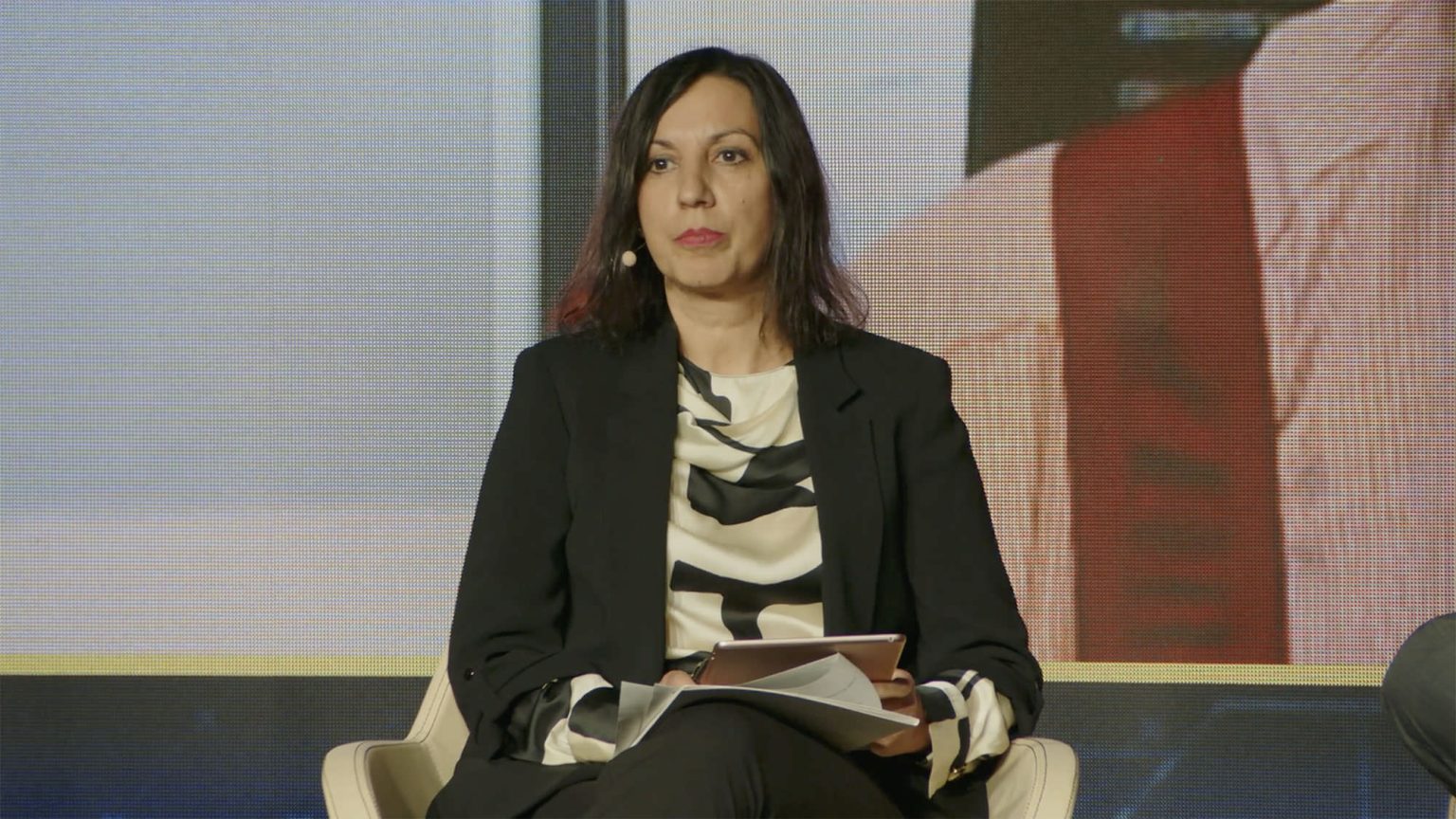
Maria Bouligaraki
The moderator, Ms Maria Bouligaraki started by saying that the digitalisation of justice had become ever more relevant, and eu-LISA was at the crossroads as it was taking over important additional responsibilities to improve the efficiency of judicial proceedings and access to justice.
Mr Radek Měrka offered a view to the digitalisation of justice on behalf of the Czech Presidency. Mr Měrka noted that the justice domain had not played a very significant role in eu-LISA’s agenda but, given the developments in recent years, it was clear that the justice domain would be a very dynamic part of the eu-LISA’s agenda in the future. Concrete examples of this were ECRIS-TCN, the very first judicial information system, managed by eu-LISA and the planned handover of the e-CODEX system. Mr Měrka said that the COVID19 pandemic and Russia’s unprecedented war in Ukraine showed that creating a safe, resilient and effective national and European justice system was needed more than ever. For the Czech Presidency of the Council of the EU, the overall top priority was to achieve a general approach for the regulation on the digitalisation of crossborder judicial cooperation and the accompanying directive by the end of the year. The timetable which specified the gradual digitalisation of cross-border judicial instruments was very ambitious and would be a challenge not only for the Member States, but also for the Commission and eu-LISA, but the benefits were great. To a question about the practical implications of the regulation on digitalisation of cross border judicial cooperation, Mr Měrka responded that it should significantly speed up the individual crossborder procedures. Then, thanks to the e-CODEX system, the communication between judicial authorities would be fast and secure. The data transmitted would be structured, therefore it would be much more effective to integrate this into the national systems.
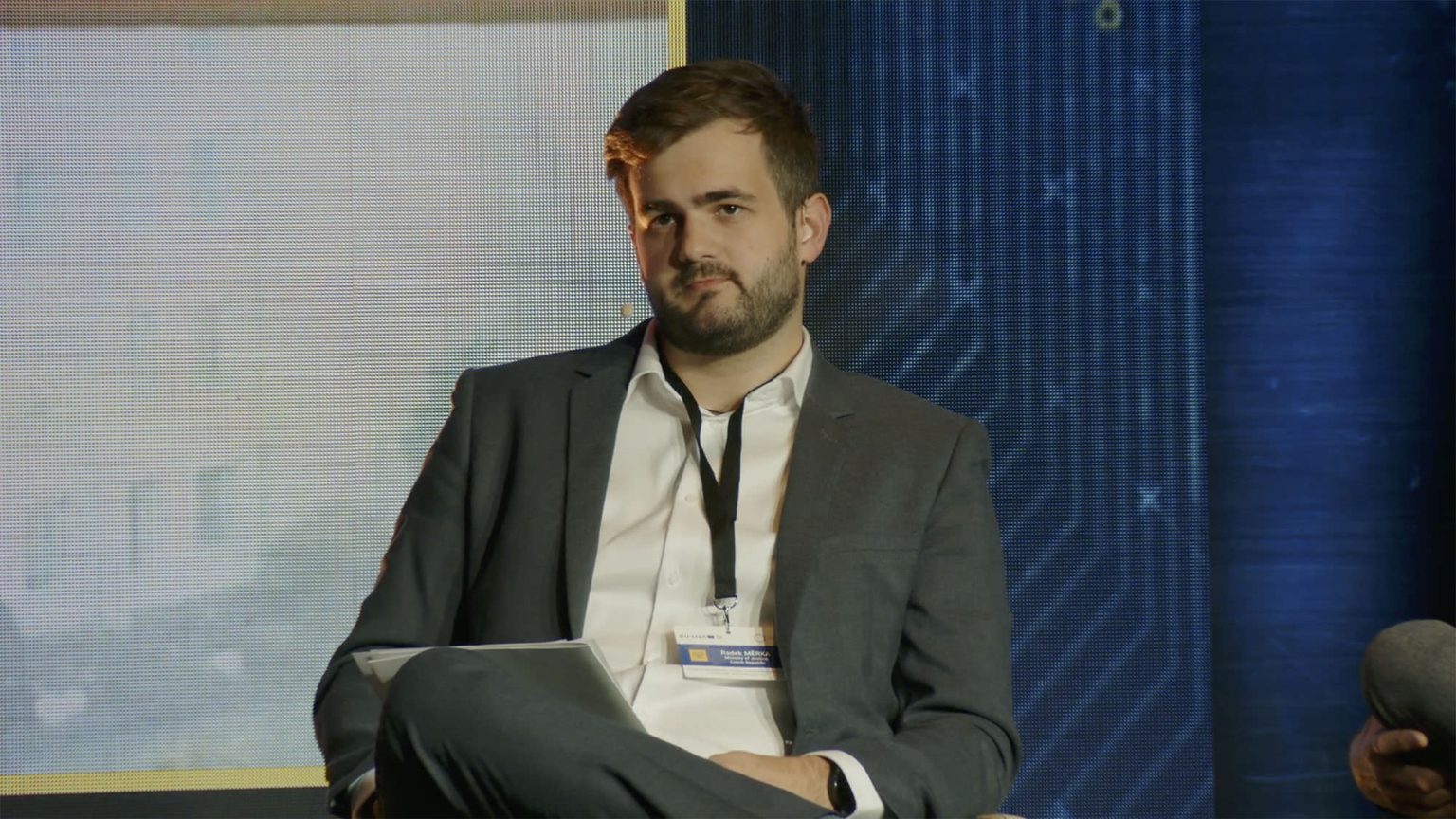
Radek Měrka
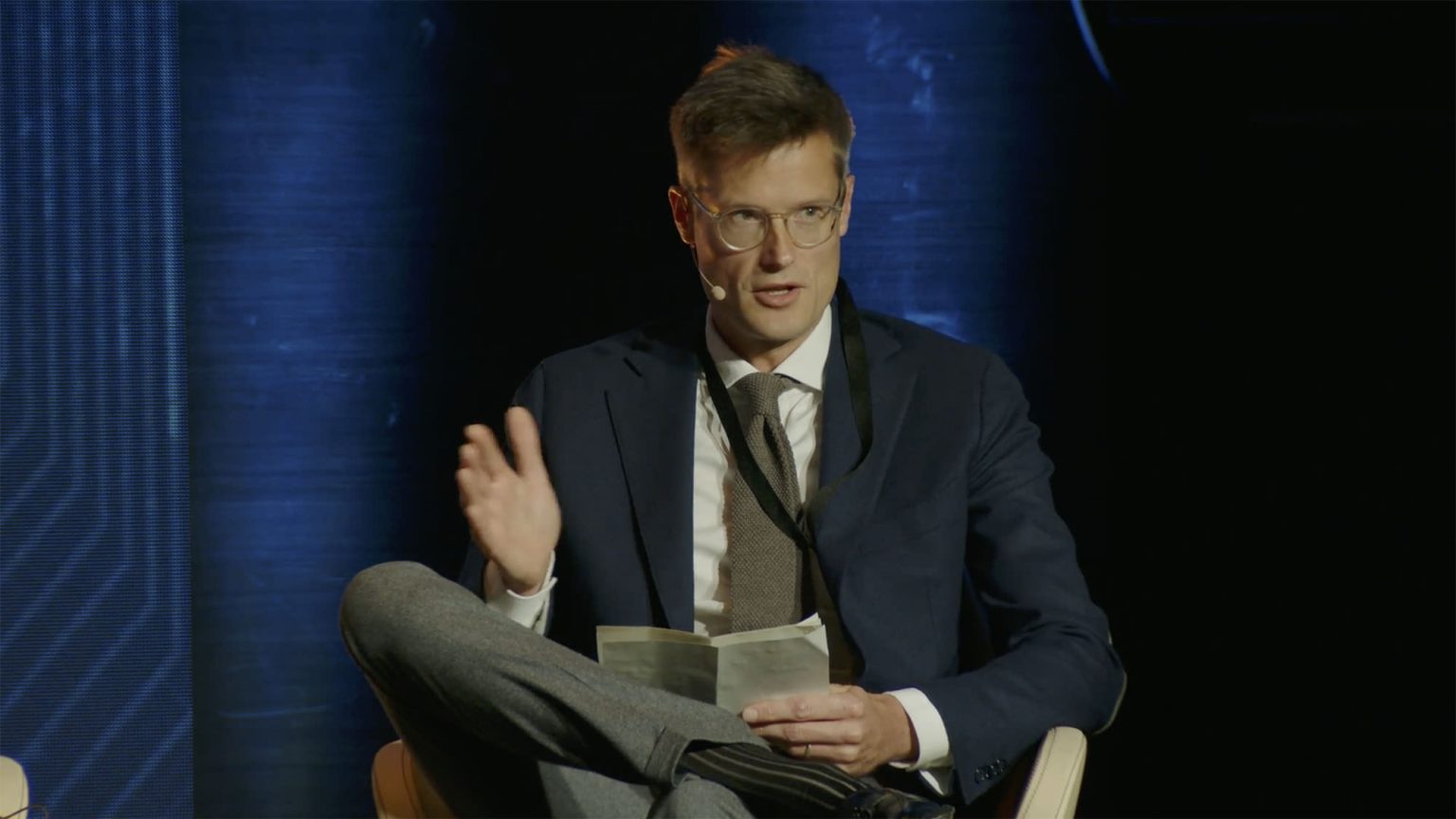
Tim Holthaus
Mr Tim Holthaus focused his remarks on e-CODEX, which allowed for e-justice communication via online data exchange. e-CODEX had been started more than 10 years ago, and was created for use by the judiciary, and therefore served the independence of the judiciary. As Mr Holthaus explained, the e-CODEX system allowed for the digital crossborder exchange between courts, public prosecutors and other legal professionals without the need to replace the existing back-end systems. It connected the national and European IT systems in the justice area; it was a reusable and interoperable system. eCODEX was very beneficial as it supported business collaboration, but it also had a few downsides. For instance, since it currently operated as a project, this structure always came along with the high administrative overheads, and the success of the project was highly dependent on the personal efforts of the individual participants who may change over time. Mr Holthaus noted that it was great that the e-CODEX regulation was now established and we had a solid framework and a capable agency, which would take over its handling. The transfer of the system to eu-LISA would start right at the beginning of January, with the official phase commencing in mid-2023, to be finalised by the end of 2023. After that, eu-LISA would not only provide support, but also be able to develop e-CODEX for the future needs. The new governance model with the Programme Management Board and Advisory Groups would contribute to bring together the community of justice.
Mr Cristian Nicolau started by offering some milestones regarding the justice area and euLISA. The first project was ECRIS, built by the Commission up to the year 2012. Subsequently, in 2020 it was entrusted to eu-LISA. Mr Nicolau highlighted the importance of the system in enabling the electronic exchange of information extracted from national criminal records between the competent authorities of the EU Member States. Mr Nicolau continued with the ECRIS – Third Country Nationals system (ECRIS-TCN) that eu-LISA was developing and that would be put into production in around a year. e-CODEX had been developed between 2010 and 2016, and during the following year, eu-LISA would take over its maintenance from the consortium. These systems were becoming the gold standard for secure crossborder judicial cooperation. Finally, Mr Nicolau highlighted the importance of the e-justice portal, which would become the citizens’ interface with the judicial crossborder instruments. Responding to a question from the moderator, Mr Nicolau explained that even though the landscape was becoming very much more complex for eu-LISA, not only in terms of developments, but also in terms of daytoday cooperation with the different bodies, the tools, the regulatory framework and the drive and momentum to manage that were in place.
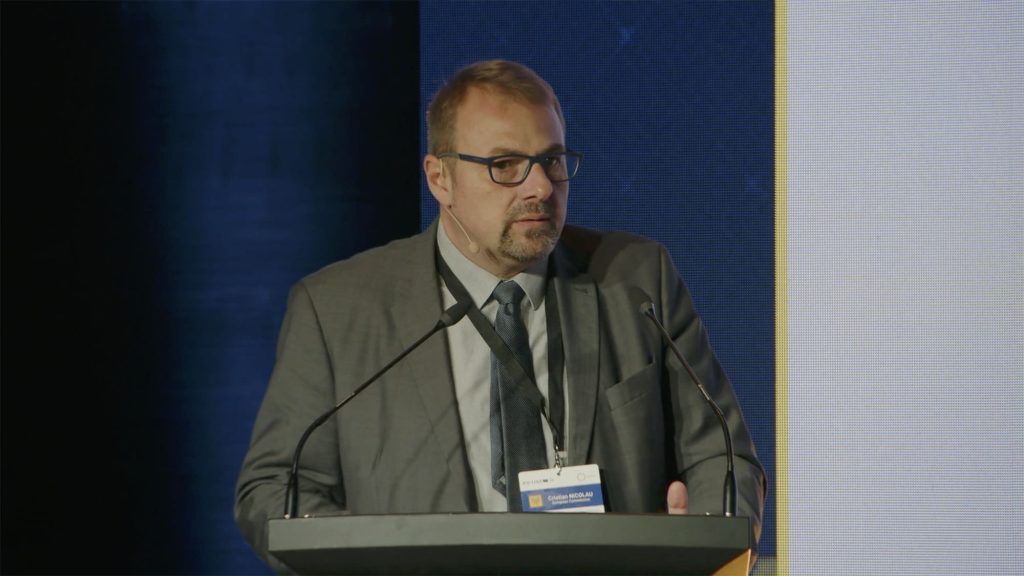
Cristian Nicolau

Roberto Lenti
Mr Roberto Lenti started his remarks by noting that digitalisation had become a key factor for justice and criminal affairs. He described Eurojust as a cooperation mechanism, which had national prosecutors on its premises, helping to coordinate the fight against crossborder crimes. Eurojust never wanted to create its own systems, and gladly relied on eu-LISA’s systems. Mr Lenti said that being able to use e-CODEX and the Joint Investigation Teams platform continued to benefit Eurojust greatly, and the agency was also interested in the ECRIS-TCN. Mr Lenti commended the cooperation with euLISA and was pleased that it would further strengthen across the judicial area in the future.
The panellists commented on the results of the poll by saying that most votes in favour of eCODEX as the most impactful IT system in facilitating cooperation between the Member States in the future was somewhat predictable, as many other solutions would be based on eCODEX. The other tools would complement it in various, more specific fields. Responding to a question from the audience regarding whether ECRIS-TCN and e-CODEX would be connected to each other, the panellists explained that the big advantage of e-CODEX was precisely the interoperability. ECRIS was part of the interoperability project with the other home affairs systems that were being run by and developed by euLISA, and this work had to be continued.
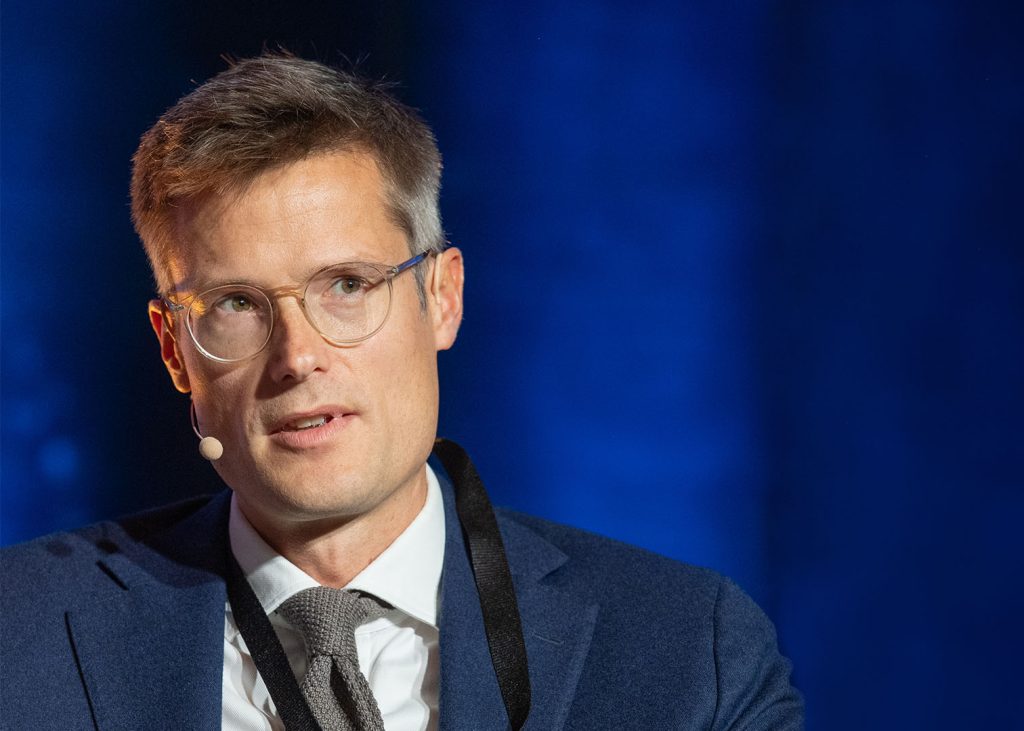
e-CODEX is a reusable solution and also an interoperable solution.
Which judicial cooperation IT system will have the largest impact on facilitating cooperation between the Member States in the future?
PANEL IV
A glance into the future: what’s next for eu-LISA?
Member of the European Parliament
European Data Protection Supervisor
Deputy Director-General, Directorate-General for Migration and Home Affairs, European Commission
Deputy Executive Director for Information Management and Processes, Frontex
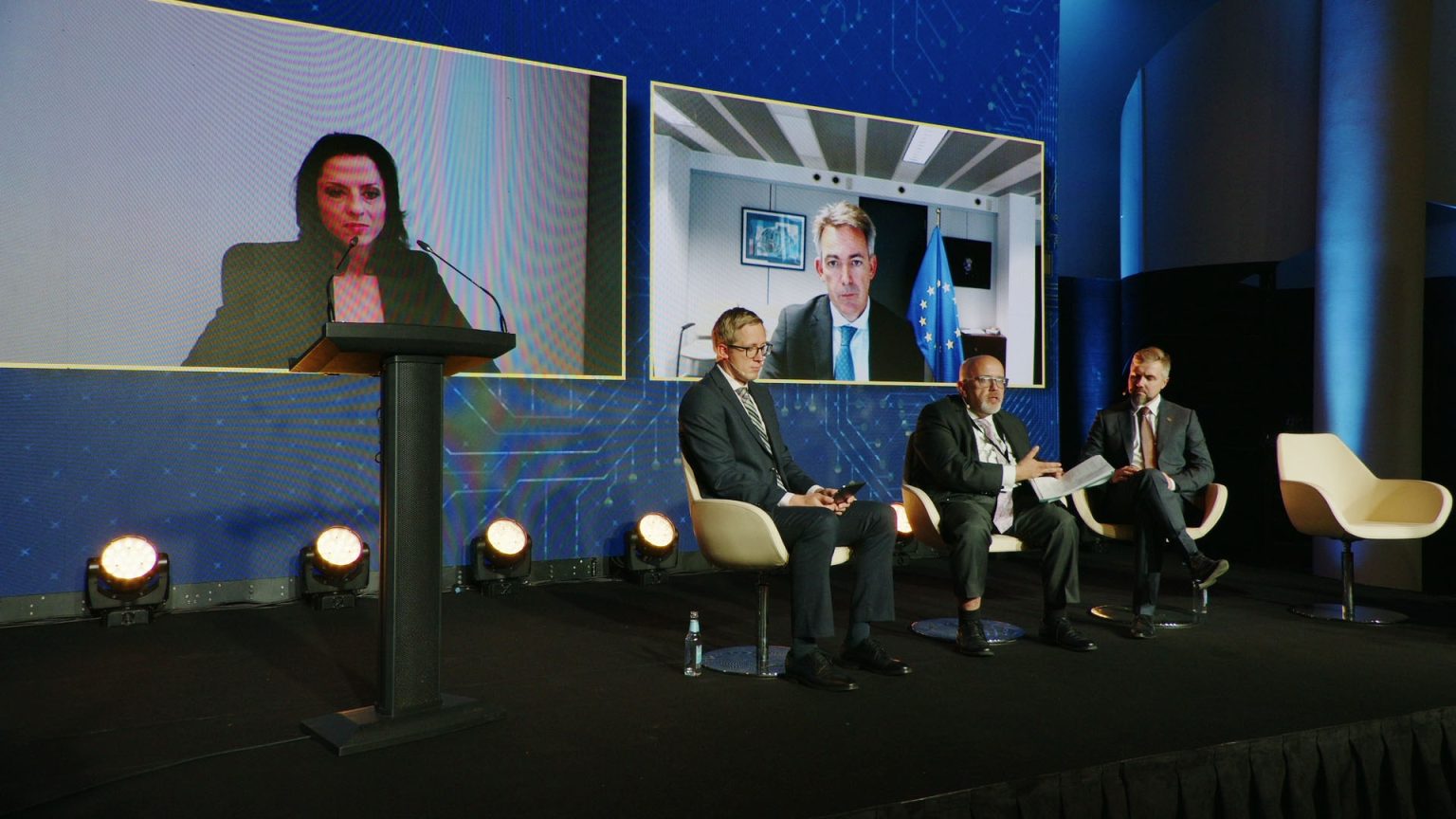

Ramona Strugariu
Ms Ramona Strugariu started by commending the work done by eu-LISA and noting that it was important to equip the agency with the capacities it needed. However, given that technologies were evolving very rapidly, we were never fully equipped to address all the challenges that the future brought. According to Ms Strugariu, we needed agencies such as euLISA to have powerful mandates: with the new mandate, the agency had a greater role in the area of research, also assurance of data quality in the systems, as well as implementation of pilot projects and proofs of concept. Adoption of the interoperability regulation was difficult, as was making the decision that an agency was entrusted with the management of all systems, but it was very good that we had finally succeeded in having the rules in place. Balancing the needs and tasks of the agency with the right budgetary and human resources was important for the European Parliament, and resources had to be made available at the right time. The European Parliament monitored how the agencies implemented their mandate, and eu-LISA had fared very well in this area.
Mr Wojciech Wiewiórowski provided an insight into the main challenges from the data protection perspective for all the existing and new large-scale IT systems managed by eu-LISA. He stated that the most important challenge was interoperability, as interoperability did not mean interconnectivity. There were five layers of interoperability: political, legal, organisational, semantic and technical. Mr Wiewiórowski explained that the problem was most pressing in the legal, but also in the organisational and semantic field. Some problems stemmed from the fact that the systems were created for different purposes: they were mixing the data from different systems, which were often pulled together using different methodologies. Additionally, for the data protection authority, there were many instances in which it was extremely difficult to say who was supervising a certain activity. Mr Wiewiórowski emphasised that these were not problems, but challenges that we had to jointly address.
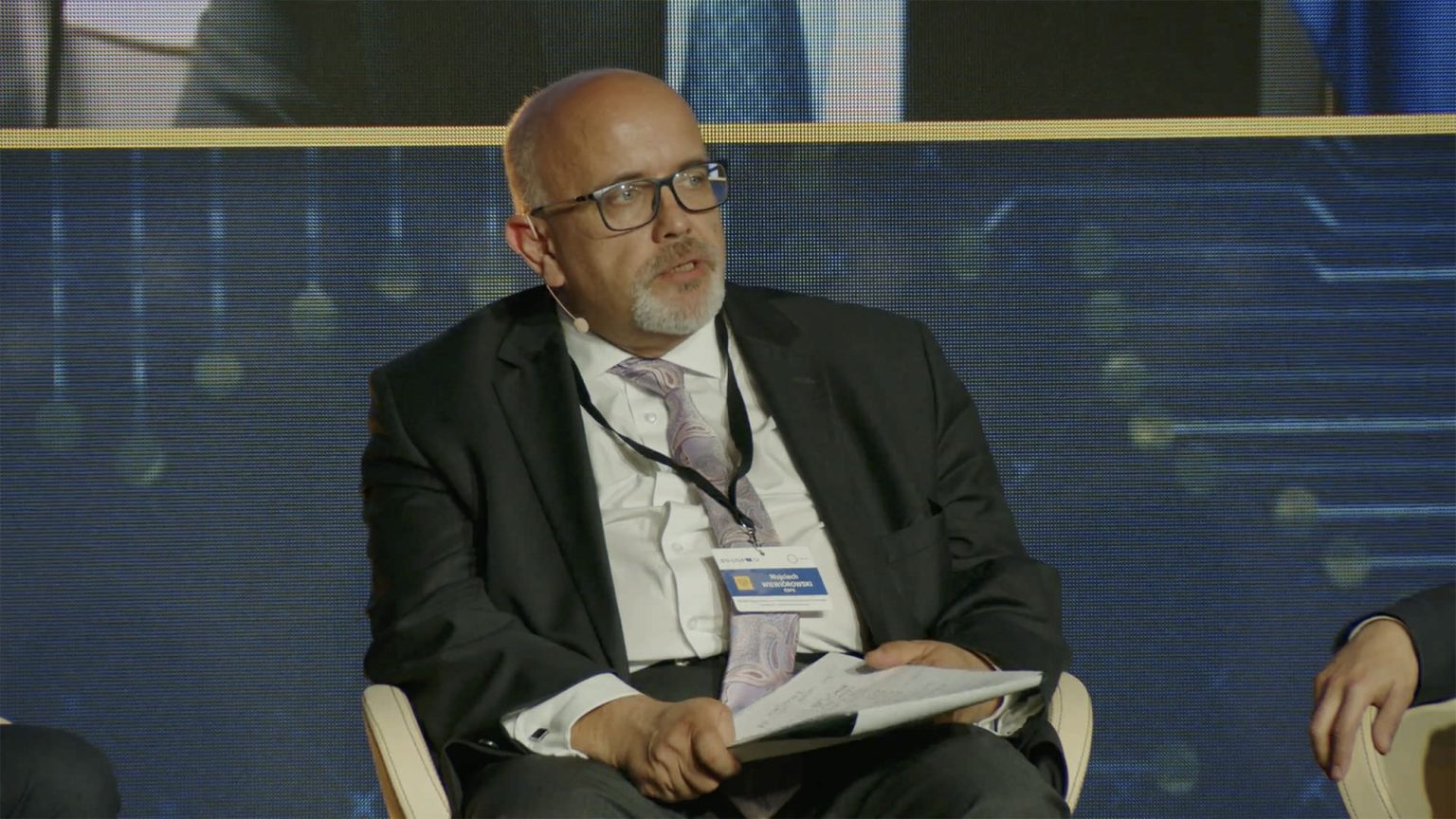
Wojciech Wiewiórowski
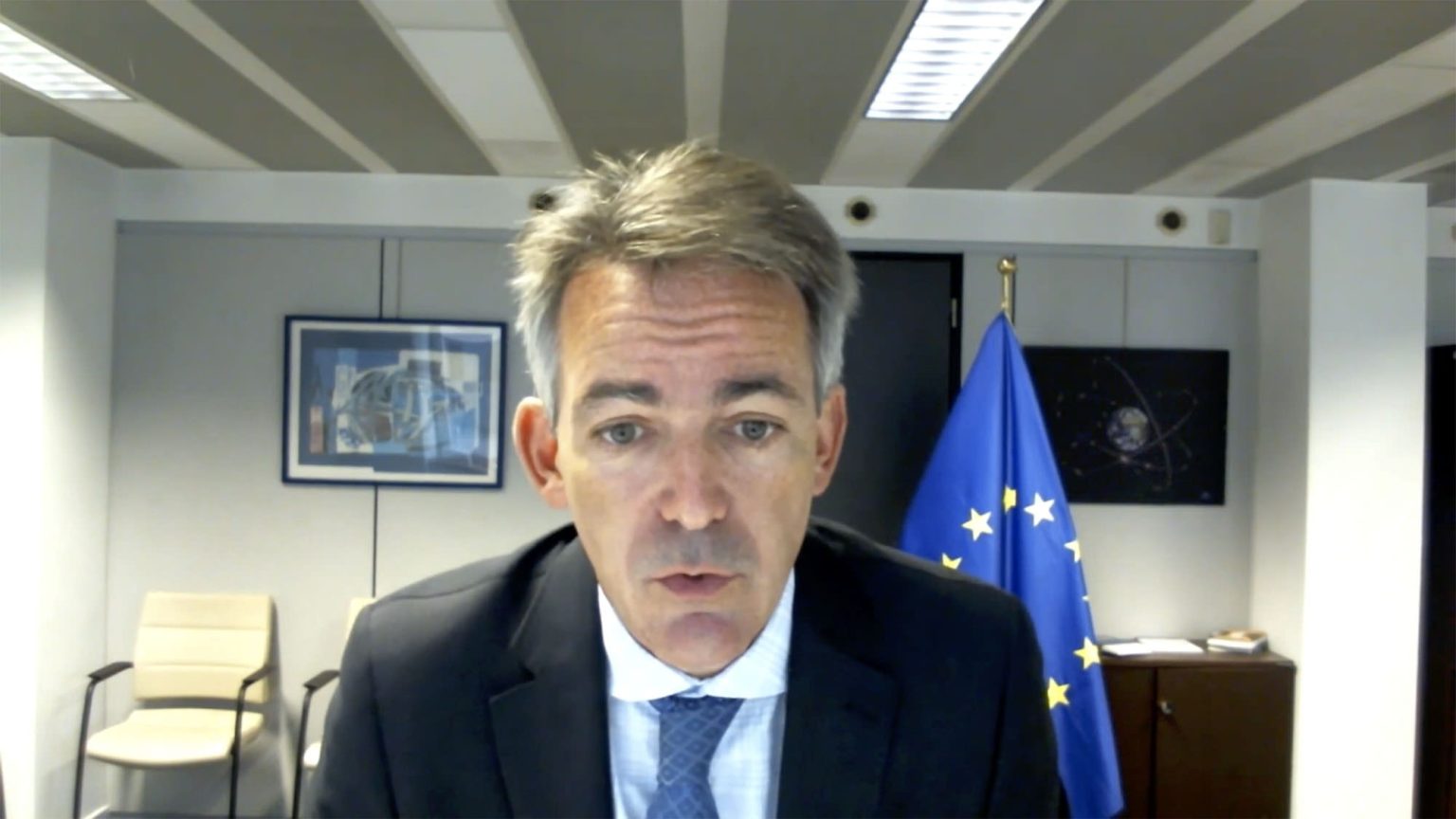
Olivier Onidi
Mr Olivier Onidi was asked about the Commission’s plans and expectations on how euLISA could further contribute to security in Europe. Mr Onidi said that it was essential to maintain the high level of quality that eu-LISA had provided in terms of delivery of the product and the operation and maintenance of the IT systems under its mandate. He underlined that interoperability was a phased project and a number of things still needed to be delivered, but it was crucial that data protection had been at the centre of this from the time it was designed. Referring to Ms Strugariu’s earlier remarks, Mr Onidi stressed the importance of the necessary budget and staffing of eu-LISA, as it was de facto moving from project management to development. An important aspect of the new regulation was that it provided an explicit task to support the Member States, who could come to the agency needing help with a dedicated task in terms of system development or implementation.
Responding to the question from the moderator, Ms Ramona Strugariu presented euLISA as a great example of an agency that had displayed excellence in performing tasks, wise expenditure of EU budgets, as well as accountability and transparency. eu-LISA was handling the systems, which were so crucial for the proper functioning of the Union and for its security and, according to Ms Strugariu, the main focus now ought to stay on keeping the systems functional. Of course, it had to be in full compliance and full respect with fundamental rights regarding data protection.
Mr Uku Särekanno received a question about how wellprepared were the EU borders for the digital transformation. Mr Särekanno explained that, technically, we were getting there as we were now in the last phase of deliveries of new systems. There were around 1800 border crossing points that needed to be ready for the new way of doing business, and that took a lot of effort. We would never be 100% ready and, at the end of the day, it was a political decision. The transition would be difficult, but digitalisation of the border control and border management was simply necessary, and eu-LISA played an important role in this.
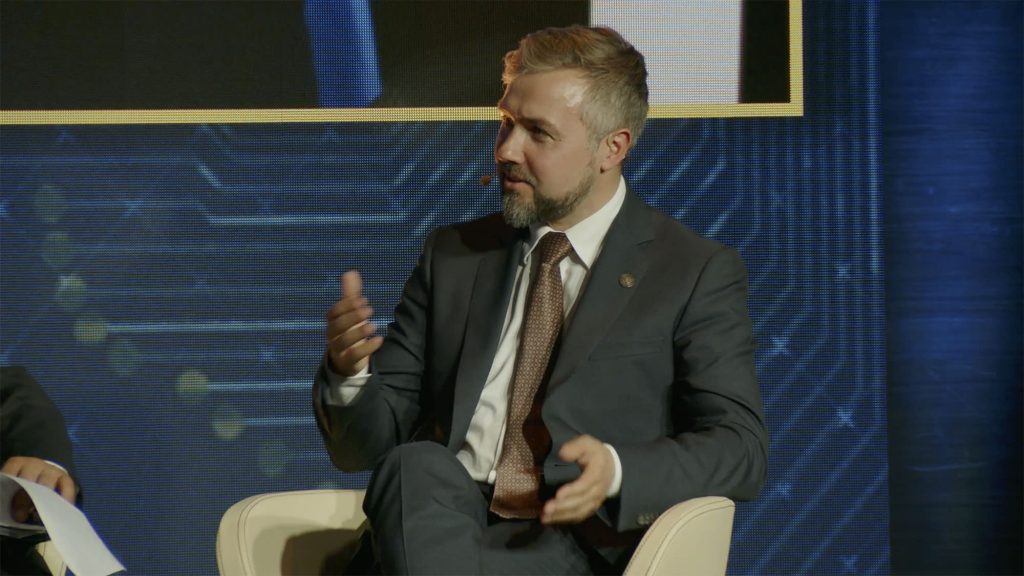
Uku Särekanno
Responding to a question about disruptive technologies, Mr Wojciech Wiewiórowski said that, generally, we shouldn’t be afraid of the regulations that we had at the moment, even though it was difficult to predict when and what kind of future technology would appear. According to Mr Wiewiórowski, it was important to close the gap between the people who decided politically and legally on what could be used and those who were preparing the systems for practical use. The agencies were the experts, and they had to develop the solutions; however, it was important to make sure that with the growing power of the agencies came growing scrutiny and accountability.
Mr Onidi offered insight into what could be eu-LISA’s main areas in 10 years’ time, explaining that the agency’s role in the field of justice would keep growing, and the next big step would be in the field of customs. Mr Onidi said that eu-LISA would also have to be much more involved in building up the resilience of our systems – not only in terms of the cyber dimension of the threat, but also the resilience and the non-cyber aspects, including network integrity. Mr Onidi also talked about digitalising all travel documents and putting everything in a chain, which would be a great development, but was a huge challenge technically and from the data protection standpoint. Interconnection with third countries was also something that had to be developed; however, it was crucial to ensure that EU’s high standard in data protection was preserved.
Mr Särekanno responded to a question about border management tasks that could be automated or delegated to artificial intelligence. He explained that we had to recognise that we were now improving our current systems, and the idea of seamless travel was still miles away. According to Mr Särekanno, the digitalisation that was going to take place next year was going to create a very important platform for that. We could see that facial images, for example, were becoming more and more mainstream in business solutions, but the key focus of the different security agencies was mostly on risk analysis. It would be very beneficial to have a bit more personal understanding about who was coming, when and how, but these solutions were currently not in sight. Mr Särekanno underlined that technology was always going a few steps ahead of the regulators and we needed to develop our own competencies – eu-LISA was very well placed for that.
The latter part of the panel session focused on the lessons learned for eu-LISA, and several speakers emphasised the important role of Mr Krum Garkov, Executive Director of euLISA, in building a strong and consistent agency that had succeeded in getting its priorities right. euLISA had done a tremendous job in ensuring that Schengen worked. For the future, the focus had also to move to the Member State side, making sure that all the Member States made maximum use of the systems that eu-LISA was managing and had established.
In which of the following areas could eu-LISA potentially contribute to the implementation of EU policies in the future?
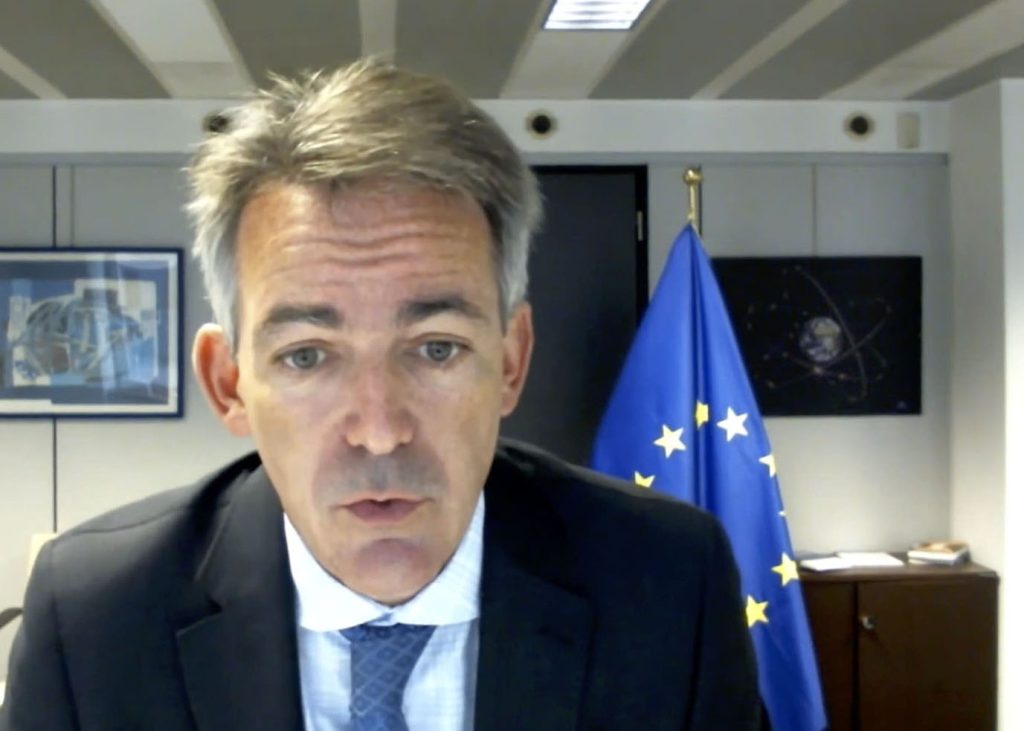
The nature of the work of eu-LISA is moving from project management to IT-development for not only to implement systems, but also to develop additional aspects which are linked with the implementation of interoperability.
Concluding remarks
Deputy Executive Director of eu-LISA
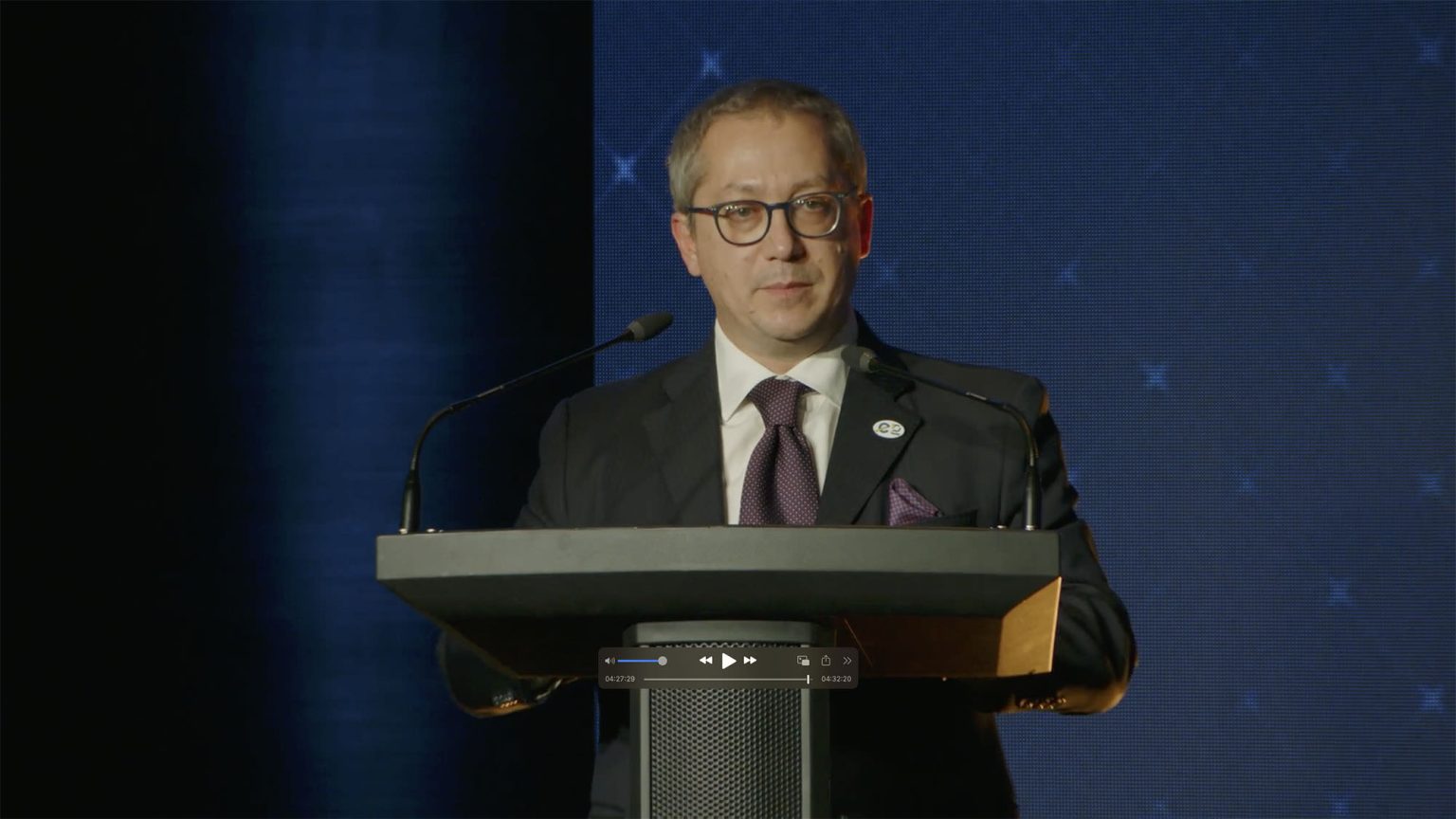
Luca Tagliaretti
Mr Luca Tagliaretti, Deputy Executive Director of eu-LISA, began his concluding remarks by thanking the speakers and participants for their insightful ideas in looking back to the past of eu-LISA, analysing current challenges, as well as setting the stage for the future work. The conference, organised with the valuable support of the Czech Presidency, provided an overview of the important work of an agency that had, in just 10 years, grown to become the EU digital agency and the digital heart of Schengen. eu-LISA had effectively contributed to developing new technologies and engaging in innovation and digitalisation of the systems that enabled the functioning of the Schengen area. It had now been tasked with ensuring the interoperability between the systems, and it was possible that, in cooperation with the Commission and various stakeholders, its area of responsibility might continue to expand. Increased research and innovation activity, including, for instance, studying the use of artificial intelligence, would have to contribute to our understanding on how technology would need to evolve to meet the challenges that Europe was now facing.
Mr Tagliaretti noted that supporting digitalisation of the justice domain was one of the objectives to which eu-LISA had always been particularly committed. The first milestone in this field was taking over the technical maintenance of the ECRIS in 2020, which paved the way for the development of the ECRIS-TCN which would be launched at the end of 2023. In a similar vein, in 2023, eu-LISA would take over the e-CODEX system, and another project – the development of the Joint Investigation Teams collaboration platform – would also benefit from an increased contribution of eu-LISA in the coming years. The lessons discussed at the conference were an important input for successfully tackling the challenges that were emerging from the new tasks and objectives of the agency. In his final remarks, Mr Tagliaretti thanked all the Member States, EU institutions and partner EU agencies for the joint work towards the further digitalisation of the Schengen area. Mr Tagliaretti said that the agency and he were grateful for the cooperation in the past years and were looking forward to the next decade to further enhance the efficient functioning of the Schengen area. The next eu-LISA conference would take place in a year’s time.








